#The setting is still around the 1910s or the early 1920s
Text

Last wip before school starts so have this some sort of Lena for that one lore change of Vampire Knight and Noble Prince Au
#wip#call of duty zombies#cod zombies#codz#cod zombies oc#codz oc#original character#shin's bimbinis#valena villanueva#primis val#This will be now called Under the Red Moon Au#There is a huge change within the lore#And I myself can't even afford to bring you all Knight Lena#Cause I tend ti get very tired with the armor#So I believe this will have alot of changes#Btw Under the Red Moon Au is an old au concept I had before but I will need to tweak every nook n' cranny of it#The setting is still around the 1910s or the early 1920s#I'll probably going to have a debate with myself on that
12 notes
·
View notes
Note
there was Chinese interest in the Out Of Asia theory, in both the Republic, Chiang Republic and People’s Republic periods before the Out Of Africa theory became commonly accepted. Was the 1954 Yeti expedition done just from the Nepalese-Indian side or were the American agents and “anthropologists” given access on the Sino-Tibetan side of the Himalayan border?
During the early part of this century, it was absolutely believed for a long time that the deserts of Western China were the most likely place of human origins, as seen in this migration map from 1944, made from the best available knowledge of the time:
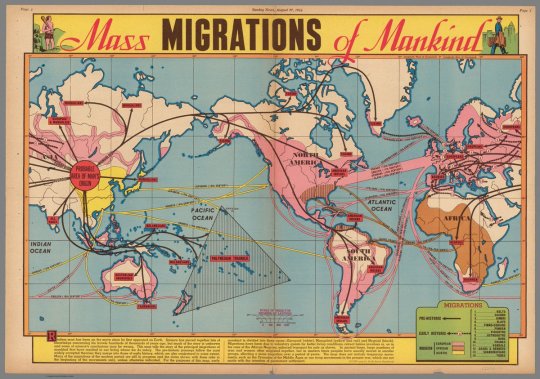
Remember, the oldest fossil remains at this point were in China, where Homo erectus was discovered (originally known by his initial place of discovery in Chungkotien Cave, nicknamed "Peking Man"). The discovery of Australopithecus and Homo habilis in Olduvai Gorge and South Africa, which place human origins in Africa, were not until the 50s and 60s, so it seemed entirely reasonable that Homo sapiens evolved in Western China.
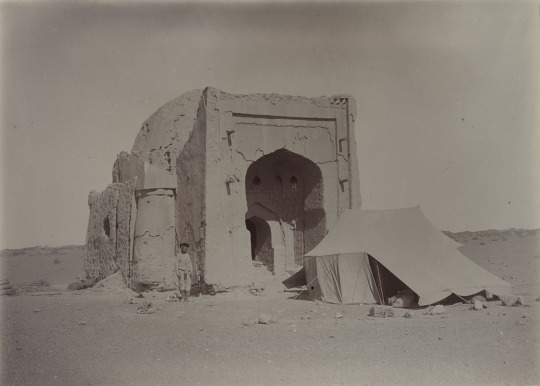
The idea that China's desert regions were the origin of modern humans and culture is seen a lot in pop culture from 1900-1950, mainly because there were tremendous explorations in the region, especially Aurel Stein's expedition of 1908, who ventured into the Taklamakan Desert to find the Dunhuang Caves and Khara-Khoto, a city destroyed completely by Genghis Khan and vanished in the desert.
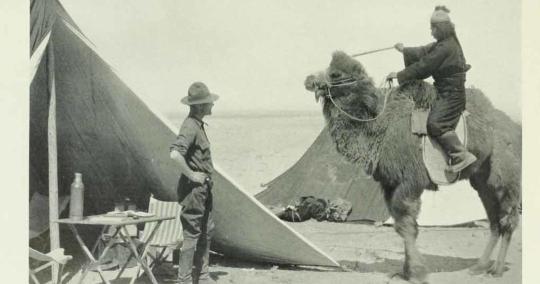
If you've ever heard of Roy Chapman Andrews and his famous expeditions in the 1920s, it's worth noting that he ventured into the Gobi Desert looking for human remains....not dinosaurs, and the discovery of dinosaur eggs was an unexpected surprise.
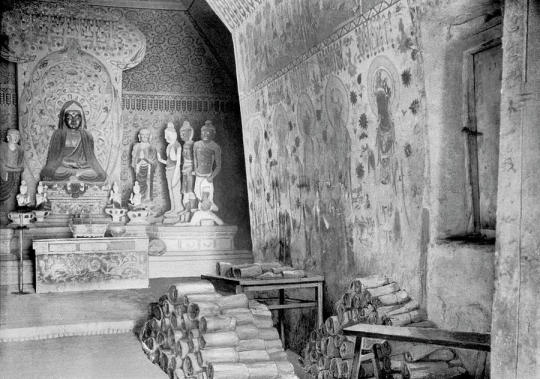
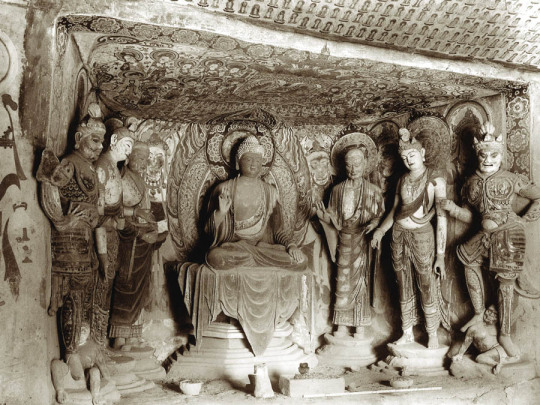
For that reason, there was a short lived Silk Road Mania that seemed to be a smaller scale predecessor to the pop culture dominating Egyptomania of the 1920s. It's bizarre to read adventure and fantasy fiction of the 1910s-1920s that features mentions of Silk Road peoples like the Kyrgyz, Sogdians, Tajik, Uigurians, and Tuvans. The best example I can think of would be the Khlit the Kossack stories of Harold Lamb (who also wrote a biography of Tamerlane), which together with Tarzan and Tros of Samothrace, formed the core inspiration for Robert E. Howard's Conan the Barbarian.
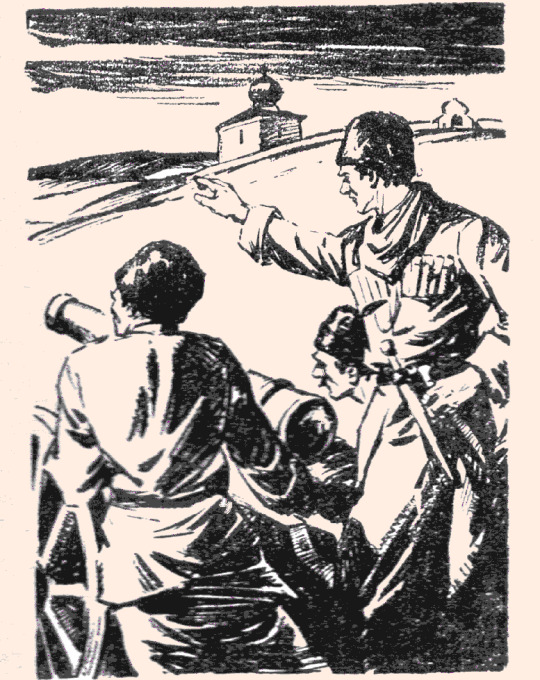
The most interesting example of this would be A. Merritt's Dwellers in the Mirage, which featured a lost city in Xinjiang that was the home of the Nordic race, who worshipped their original religion, the kraken-like squid devil god Khalkru. It was widely believed in this era that Nordics emerged from Central Asia originally, and while it's easy to write this off as turn of the century racialist claptrap pseudohistory (along with Hyperborea legends), in this case, it is actually true: a branch of the Indo-European family lived in West China, and 5,000 year old redheaded mummies have been found in the region. As usual, A. Merritt was right on the money with his archeology, more so than other 1920s authors. After all, his "Moon Pool" was set around the just discovered ruins of Nan Madol, the Venice of Micronesia.

Jack Williamson's still chilling Darker Than You Think in 1948 was also set in the Silk Road/Central Asian region, as the place the race of shapeshifters emerged from, Homo magi, who await the coming of their evil messiah, the Night King, who will give them power over the human race.
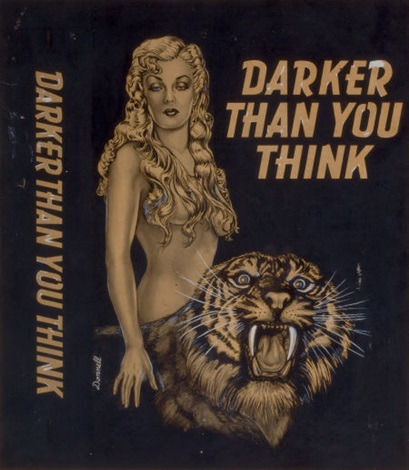
H. Rider Haggard set "Ayesha: the Return of She" (1905) in Xinjiang, among a lost Greek colony in Central Asia (no doubt based on Alexandria on the Indus, a Greek colony in modern Pakistan that was the furthest bastion of Greek Culture). This was also two years after the Younghusband Thibetan Expedition of 1903, where the British invaded Tibet. At the time, the Qing Dynasty was completely declining and lost control of the frontier regions, and the power vacuum was filled by religious authority by default (this is something you also saw in Xinjiang, where for example, the leader of the city was the Imam of Kashgar).
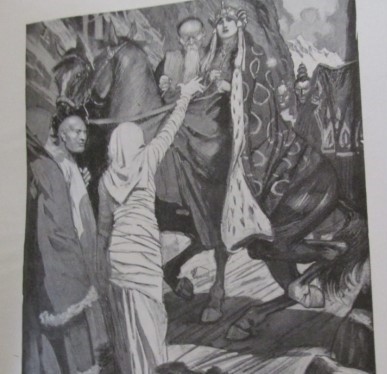
This is one of the many British invasions they have attempted to cram down the memory hole, but if you ever see a Himalayan art piece that was "obtained in 1903-1904" ....well, you know where it came from.
Incidentally, there's one really funny recent conspiracy theory about paleontology, fossils, and China that I find incredibly interesting: the idea that dinosaurs having feathers is a lie and a sinister plot spread by the Communist Chinese (who else?) to make American youth into sissy fancylads, like Jessie "the Body" Ventura. How? By lying to us and making up that the manly and vigorous Tyrannosaurus, a beast with off the charts heterosexuality and a model for boys everywhere, might have been feathered like a debutante's dress. What next - lipstick on a Great White Shark? The long term goal is to make Americans effeminate C. Nelson Reilly types unable to defend against invasion. This is a theory that is getting steam among the kind of people who used to read Soldier of Fortune magazine, and among abusive stepfathers the world over.
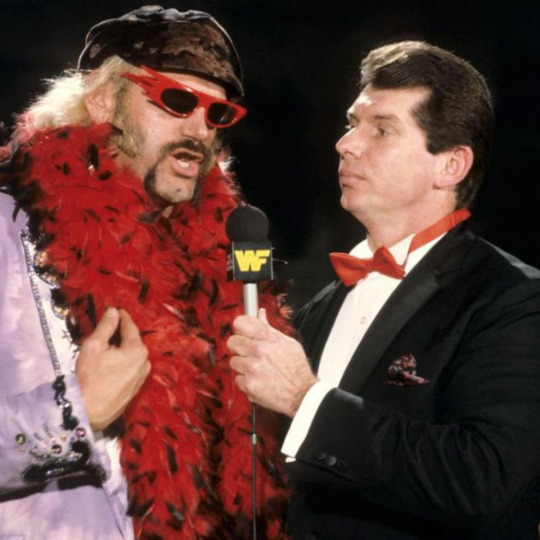
...okay, are you done laughing? Yeah, this is obvious crackpottery and transparent sexual pathology, on the level of the John Birch Society in the 60s saying the Beatles were a Communist mind control plot. Mostly because animals just look how they look, and if it turned out that the ferocious Tyrannosaurus had feathers and looked like a fancylad Jessie Ventura to you, well, that's your problem and mental baggage, really.
I was left scratching my head over this one. But there is (kind of) something to this, and that is that a huge chunk of recent dinosaur discoveries have been in China. I don't think it has anything to do with a Communist plot to turn American boys into fancylads, but more to do with a major push in internal public investment in sciences in that country, and an explosion of Chinese dinosaur discoveries. If you want to see a great undervisited dinosaur museum, go to the Zigong Dinosaur Museum in Sichuan.

Pop quiz: what living scientist has named more dinosaur discoveries? It's not Bakker or Horner. The greatest living paleontologist, Xu Xing, which is why a lot of recently found dinosaurs are named things like Shangtungasaurus.
250 notes
·
View notes
Text
The Tailor & The Seamstress - A Reading Aid
So here's some stuff I'm just putting up here as a kind of glossary/reading aid/moodboard collection for The Tailor & The Seamstress.
It's not an easy read in some ways, because it's set in 1910 and deals with some fashion terminology that can be opaque, so yeah. Just dropping this here.
Accents
Firstly, Remy and Anna do not speak in their accents, and that was deliberate. Working where and in what they do (i.e. haute couture in 1910's New York), having a Southern accent would have been very uncouth. For professional reasons they would have got rid of their accents, or polished them off, fairly quickly. But both of them actually filed off their Southern accents earlier in life, for entirely different reasons (which will become clear later on in the story).
The closest you'd probably get to what they sound like is probably the Transatlantic accent, which developed in the late 19th century in the acting industry and among the American upper class. (Thanks to @narwhallove for pointing this out!).
You can hear what this accent sounded like in 1930's and 40's Hollywood movies:
Dress Forms
There are a lot of dress forms floating around in this story. A dress form is very much like a mannequin, where a garment can be mounted on it to make working on it easier. The difference between a dress form and a mannequin is that a form can be adjusted to different sizes. Here's an example:

Nowadays, dress forms usually conform to modern standards of sizing, but back in the day, all dressmakers/fashion houses would have dress forms made according to the sizing of their target clientele, and adjustments would be made to individual customers when a dress was purchased.
The dress forms at the House of Burford, of course, are made to Anna's measurements. 😉
Maison Maillot
The idea of Remy working at a waning fashion house was inspired by the historical House of Worth, which was probably the world's first modern atelier. Established in 1858 by Charles Frederick Worth, it came to dress empresses, queens, actresses and singers. The business was later taken over by his sons, but the house's fortunes waned in the early 20th century. IMHO, you begin to see the decline in design quality by the 1920's. Worth was bought out by the House of Paquin in 1950, and closed in 1956. In 1999, it was revived.
Early Worth designs were so powerfully beautiful, and always innovative and at the cutting edge. In the story, the House of Maillot's heyday would have been the same - a tale of an exciting and forward-thinking atelier that dressed the best and brightest.


By the early 20th century, at the time of the story, they are still putting out beautifully breath-taking clothes - but decades of newer competition means that their work no longer stands out. By the 1910's, the House of Worth had been eclipsed by designers like Callot Soeurs, Paul Poiret, and Lucile (of Titanic fame), who were becoming the innovators in women's dress, and Worth tended to follow where others led. This is where Maison Maillot is at in the story; and their rival, the House of Burford, is one of those new and exciting innovators in fashion.

By the 1920's, fortunes have fallen, and the House of Worth was putting out stuff like this:

The Peacock and the Phoenix Dresses
The rival dresses don't have any analogue in real life, but here are the dresses that roughly inspired them.
A 1909 evening dress by Callot Soeurs:

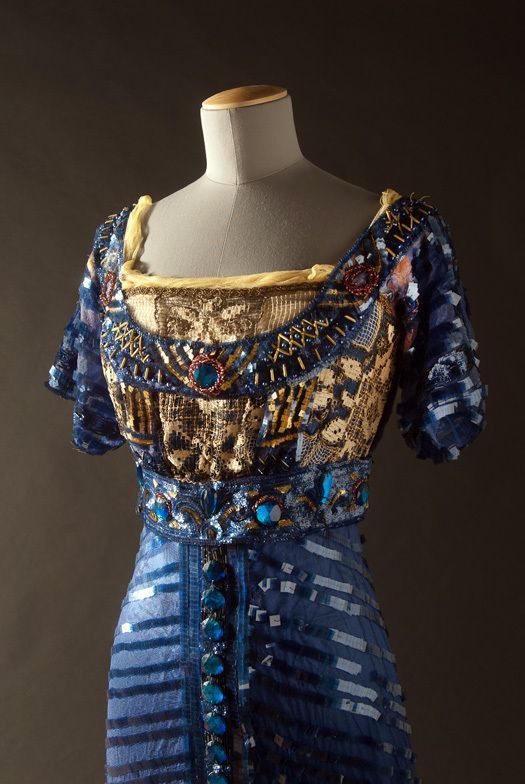
And a 1913-14 evening dress by an unknown artist:
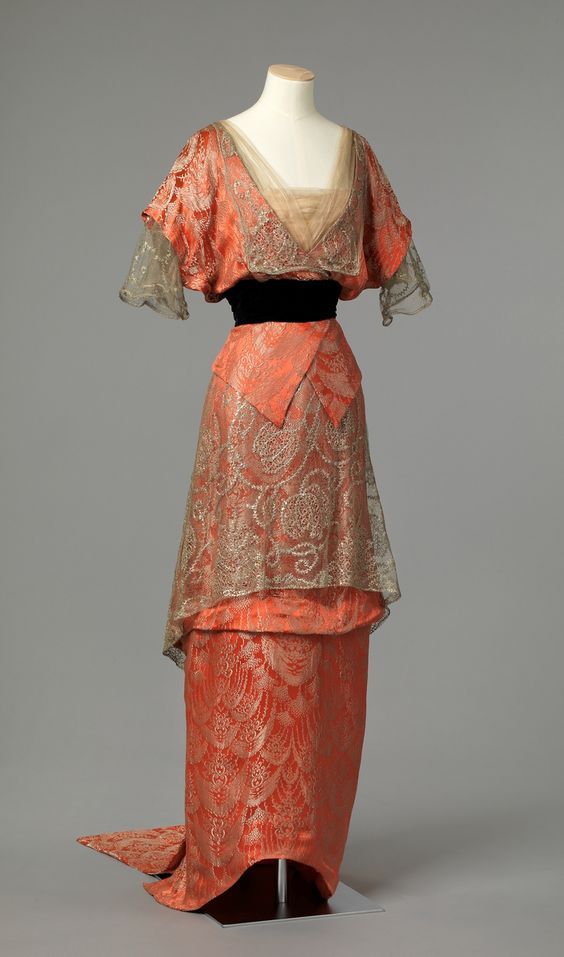

I like to think of Remy always being slightly (maybe a lot) more ahead of his time with his clothes than Anna is with hers. Remy is designing tubular dresses a few years before they started to become a fashionable silhouette. Ironically Maillot rejects them, but I find it kind of funny that by the end of the decade, he'll have been wishing his house had set the trend Remy had conceived of years before.
At SOME POINT I will draw how I envision the dresses to be. I HOPE.
If you want to see my moodboard for this story, you can catch it on Pinterest here.
#The Tailor & The Seamstress#fanfic#meta#reading aid#historical fashion#historial fiction#historical fic
29 notes
·
View notes
Text


Mount Rainier National Park Archives Photo of Civilian Conservation Corps crews working on Westside Road in the 1930s (top). NPS Photo of the Westside Road next to Tahoma Creek in 2015 (bottom).
Like the Wonderland Trail encircling Mount Rainier, an “around-the-mountain" system of roads was envisioned for Mount Rainier National Park during the 1910s to early 1920s. It was only partially achieved during the following decades with the creation of SR123/410 on the east side of the park and Stevens Canyon Road in the south. Westside Road, as its name implies, was intended to span the west side of the park from Nisqually Entrance to Mowich Lake. However, budget constraints and the rugged topography of the mountain prevented completion of Westside Road and it was left as a 13-mile-long spur road. Repeated flood damage from Tahoma Creek eventually closed Westside Road to vehicles after the first three miles. Built from 1926-1934, Westside Road is still considered part of the Mount Rainier National Historic District due to its association with the park’s early master planning.


Mount Rainier National Park Archives Photo of St. Andrews Creek Bridge. NPS Photo of the St. Andrews Creek Bridge in 2014.
One of the historic structures along Westside Road is St. Andrews Creek Bridge, built in 1930-1931. St. Andrews Creek Bridge includes two set of stone stairs that descend to the creek from the northeast and southwest corners of the bridge. The 115-foot-long, 34-foot-wide bridge is a reinforced concrete-filled spandrel arch veneered in native granite.
Have you hiked or bicycled over St. Andrews Creek Bridge along Westside Road?
#Historic Mount Rainier#mount rainier national park#Mount Rainier#Westside Road#St. Andrews Creek Bridge#history#architecture#park planning
21 notes
·
View notes
Text






Hattie M. Carstens was a beloved activist who served a variety of social causes in Detroit until her death in 1915. This school, designed by the firm Malcomson & Higginbotham, opened on Coplin Street and East Vernor Highway a year later and named in her honor.
The three-story school has an F-shaped floor plan, the result of additions in 1919 and 1921. This made it fairly large for an elementary school, with 29 standard classrooms in addition to a library, kindergarten and four large specialty rooms. The building is also rather unusual among Detroit schools for its raised, fenestrated basement level, which is sunken half a level below. The front façade faces southwest onto Coplin Avenue, and the school sits in the middle of an entire 5-acre city block, just north of Vernor Highway.
The school is considered an outstanding example of the Arts and Crafts style that was popular in the early 1900s. This can best be seen in Carstens' decorative brick detail and tile and terra cotta that is focused around the central entrance and between floors. Malcomson & Higginbotham designed a handful of other schools in this style during this time period - Nichols School (1910), Breitmeyer School (1915) and Harms School (1917). Nichols and Harms are still in use; Breitmeyer was demolished in 2010. But the 1920s saw a shift in the design of educational buildings in the city, with a firm shift toward the Collegiate Gothic found at the great educational institutions of England. This makes schools of this style rare in Detroit.
An addition in 1919 added six homerooms, a gymnasium and an auditorium, and another addition two years later tacked on another nine classrooms.
The Herbert M. Rich School, named after a secretary of the Detroit Tuberculosis Society, was built in 1927 on the grounds of Carstens. That building was demolished at some point; it was a four-room bungalow-type structure with a dormitory.
In 1957, Carstens was converted into a unit for girls enrolled in the special education program, and opened the following year. Several basement classrooms were added in the late 1950s or early '60s.
The school continued serving the east side for the next half century. However, the Fox Creek neighborhood saw considerable decline and disinvestment during that time. Nevertheless, Carstens remained a high-performing school. staff went above and beyond to help their students. As Detroit URBEX wrote, "After several students were hospitalized with severe lead poisoning, Carstens began an outreach program educating families in the neighborhood about the dangers of lead paint in older houses. When teachers found out that many students were going hungry during weekends, they made extra meals for them to take home. A New York Times article noted 'to have more money for instruction, teachers sit with students at lunch, saving the school from having to hire lunchroom aides. Teachers hold jacket and shoe drives for children who have no winter coats and come to school in slippers. At Thanksgiving every child goes home with a frozen turkey donated by a local businessman. Twice a year a bus carrying a portable dentist’s office arrives, and a clinic is set up at the school so children can get their teeth checked.'”
However, as Detroit's population continued to decline, so did Carstens' enrollment, with the school losing more than half of its population between 1998 and 2007. In March of 2010, the district proposed closing Carstens Elementary, citing the loss of students and the $3 million in repairs the aging building needed. Parents fought to keep Carstens open and helped win it a temporary reprieve - but that stay of closure lasted only a year.
In 2011, Carstens was closed and merged with nearby Remus Robinson Middle School, making Carstens one of a staggering 195 public schools closed in the city between 2000 and 2015. Three years later, Carstens was among 57 closed Detroit Public Schools (DPS) properties given to the City of Detroit in exchange for forgiving millions of dollars in DPS' unpaid electrical bills. Sadly, the building has not faired well since closure, with major roof failure causing significant water damage throughout.
The City released a report in 2021 that offered potential developers insight into the structural integrity and floor plans of more than 60 vacant schools - 39 owned by the City and two dozen still owned by the school district. The effort was not only to take inventory of the dozens of vacant schools dotting the city, but also to incentivize redevelopment of the structures by reducing the upfront costs through the assessments provided. Given the roof failures and decade of decline, the City estimated that a renovation of Carstens would cost around $16.2 million, depending on use.
Carstens is located in Detroit's Fox Creek neighborhood, one that has seen more than its share of challenges and demolitions. The school is surrounded by vacant fields - and is home to one of the largest concentrations of vacant land and City-owned properties. Given the costs and challenges of redeveloping a school that's been vacant for more than a decade, this makes finding a savior for Carstens, no matter how beautiful the building is, sadly unlikely.
You can Follow For More on
Instagram - Mantis Lyblaca
TikTok - Mantis Lyblaca
Facebook - Mantis Lyblaca
#photography#my photos#photooftheday#aesthetic#photographer#abandoned#Detroit#urbex#exploring#explore#abandoned school#Michigan
7 notes
·
View notes
Note
I'm excited that Indycar is coming back to Milwaukee in 2024. Do you have any interesting facts about racing at the Milwaukee Mile?
DO I?
Oh of course -- it's hard not to with a track that has been around for so long.
Like a lot of race tracks in the beginnings of American Open Wheel, the track originated as a horse racing track, constructed in 1876. In 1891, the state of Wisconsin purchased the land that the track was on for the Wisconsin State Fair -- the track is still apart of those fairgrounds.
The first motorsport event was held at the track in September 1903. William Jones of Chicago set the very first track record with a 50 mph (80km/hr) lap (my how motorsports has changed). The Milwaukee Mile is considered the longest continuously operating motor speedway in the world.
The track attracted the biggest names of early American motorsports -- Barney Oldfield (who was like the first American motorsport star) and Walter Christie (who was also a really noted and respected racer who eventually went on to help invent a suspension system for tanks that was used in WWII) raced there in 1905 and again in 1907, setting track records both times.
Barney Oldfield returned to the track a decade later in 1917 to face off against Ralph DePalma (another era super star and honestly one of the best to ever do it imo). The car he drove is the interesting (to me) part because it was so far ahead of its time, I think.
It was called the 'Golden Submarine' built by Harry Miller and Fred Offenhauser (if those names sound familiar, they are the two who created cars that dominated the Indy 500 for decades) with the help of Barney Oldfield in response to the death of Barney's close friend Bob Burman who was killed when his open cock-pit car rolled. And while it was kind of primitive, it included a roll cage (and I think it's probably the first one?) But it looked like this:
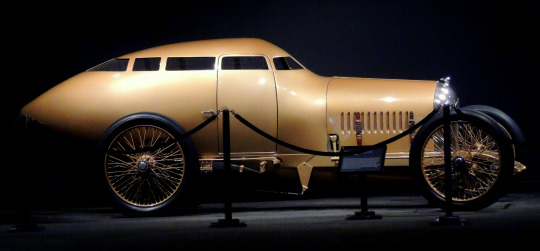
(I actually just really love the Golden Submarine and will not pass up any opportunity to make people look at it)
Barney Oldfield was in fact victorious in the Golden Submarine over Ralph DePalma (who interestingly was driving a car that was outfitted with an aviation airplane... early motorsports was very zany).
Here's an article from the Sheboygan Press because I think this picture of Barney Oldfield is hilarious and wonderful:

ANYWAY I am off-topic so back to the Milwaukee Mile -- the track was both a horse and auto track so it was dirt in the early stages. In the late 1910's into 1920's there was this big fad of board tracks (which were exactly what they sound like, made from wooden board) so the Mile fell out of favor with the big name, nationally renown racers of that era.
In the early 30's, the track put in an improved grandstand that if my math is correct, about doubled the numbers of seats. In this time frame too, the Green Bay Packers played two games a year in the infield. Anyways, the improvements drew back the top level open wheel cars in 1933. A lot of sources credit this race as the start of the term 'rain date' but I can't find any independent evidence in newspapers to support this so take this as you will, I guess?
The track was first paved in 1954. Jim Clark won a race there in 1963. It also has hosted NASCAR.
I ran out of steam at the end, I'm very sorry but the Mile has a lot of historic value to IndyCar and I'm really glad to see it back on the schedule, I hope the crowds are big and the racing is good so we can enjoy the track for decades more <3
#can you tell what period of motorsport I'm most knowledgable about lmao#indycar#motorsport history#thank you for this question <3
9 notes
·
View notes
Text
The modern girl of the early 20th century
In this article, we are going to discuss the way in which art, comics and illustrations in the early years of the 20th century helped shape and cement the archetype of the new modern woman, not only in the western world but globally. After all, modernity happened everywhere. I don’t like to put countries and rank them as one set of countries as being the end goal that everyone else is trying to catch up to, because this is very much a tenet of imperialism and i am decidedly not here for it. However, there is no going around how this is part of a very prevalent narrative. That you can quantify progress and quote unquote civilization and modernity. I think of the prevalent idea about of how progress moves and how it’s a view that is generally associated with the current capitalistic understand of our world that values constant progress and growth, and that history works in that manner. However progress is never truly linear, and the way history evolves is full of ebbs and flows, of progress in certain areas, and regression in others, and there is always a judgement of value that is being made when thinking about the march of progress . The 1920s and the 1930s were an era of constant change on all fronts, and the world as a whole was marching straight into the modern world as the repercussions of the first world war were still being felt.
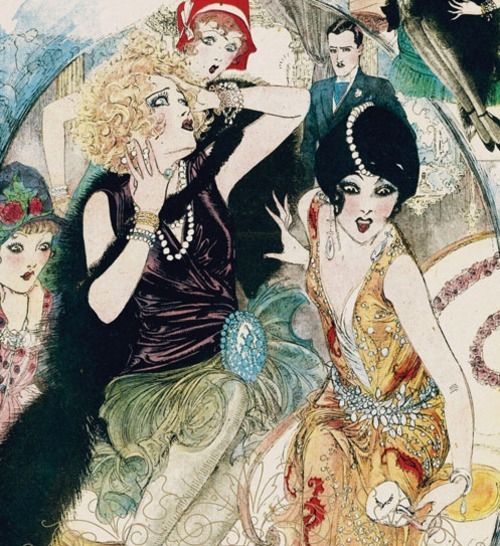
In those years, the printed medium was at its peak, illustrated strips, which were what we would consider to be the ancestor of the comic were gracing the pages of newspapers , and in an age with no internet, where the medium of radio or movies were just getting their start, newspapers were the main way people got all of their informations on the current events, the latest plays and the latest books and all of the knowledge about the right places to be if you were anyone. From the classified ads to the marriage announcements, the newspaper and the printed medium in general was solidly embedded in the culture.
The 1920s and the 1930s were the beginning of the movement of art deco, a new modern style that was clean and streamlined visually, with very neat and geometrical lines, and it is very much a reflection of the current trends in fashion, architecture and design. It is very much in the spirit of the times and i think it was very much in keeping with the times where there was much more of a monoculture in general, you could easily pinpoint what were the big lines of the trends of the eras as they all played off each other and reflected the world that existed around them — through the visual arts, art and culture. There was a generalized aesthetic, if one can say it like that, in a way that I don't think we have anymore. I mean i have been trying to pinpoint what are the trends for the 2020s and when I tell you I absolutely cannot. I have to admit that trends are cycling at such a fast rate nowadays that they do not really have the time to truly permeate the general mainstream culture. On one hand, I do think it’s good that no one can feel the pressure to ascribe to a specific mainstream set of trends if they don’t like to, I think it’s way better to really be able to pick and choose what kind of style truly reflects the person you are and your interests, however I think this does imply a minimum of effort to truly try and discover those interests and curate a personal style and not follow the extremely fast trends that we have now. While before, those trends shifted on a cycle of roughly 10 years, and no matter how stark the transition from the 1910s and the Edwardian era to the shapeless and shorter dresses of the 1920s and then to the more feminine and elegant silhouette of the 1930s, the truth is that the change is very gradual, the shape relaxed and shortened season after season, and it’s only with distance that you can perceive how strong the change was. I think so much of it is in hindsight. Maybe in 10 or 20 years I will be able to pinpoint the changes and broad line of the 2020s tendencies, because history aways seems clearer when you are removed from it.
Through art, images, fashion and advertisement, the world saw a changing and mutating definition and significance off what it meant to be a woman. First of all, I think I really have to stress that i’m talking in binary terms here because this is how the illustrations and advertising as well the shifting of the gender politics were at their base core. I totally acknowledge how it is so much more complicated than that, and the definitions of womanhood and femininity are as diverse and complex and Complicated as there are women in the world, and that our relationship to gender and gender expression is an ever evolving one and that understanding will always be within a certain societal context and you cannot divorce that understanding from the global realities. All of it is arbitrary in a certain way, but it is constructed with social interaction, customs, and visual images contribute greatly to this understanding that we have of it. I will be taking about a very mainstream view of gender, and womanhood here through advertisements and images, which is how that identity was constructed during the period we’re talking about, and especially during the interwar period which was one of great change and shaking up the old ways of how things were being done and how people reacted to it, as well as how it translated to the world of visual culture specifically in the area of the illustrations and comics that were in the printed press and the advertisements of the era.
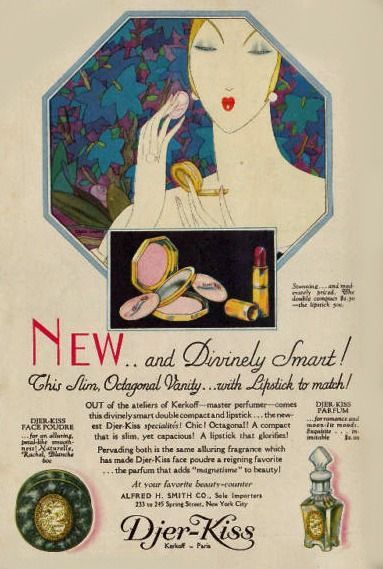
During the 1920s, we can see that change very quickly and assist to a boom in consumerism, with the roaring twenties, the end of the first world war and the end of a very specific idea of traditionalism, there is this new and unbridled world of possibilities in the general culture and consciousness. The youth goes out to try and have fun, the magazines and stores are trying to sell anything and everything to a new modern young woman. The 1920s is the moment where we can see that shift, it’s that clinching moment where things become overwhelmingly mass produced and the predominance of the ready made. Not that this shift was not happening beforehand, the industrial revolution happened in the 1830s or so and it steadily continued during the 19th century, building over what was existing, and changing the cultural mores and the habits around consumption, but i think that break in the 1920s is absolutely obvious. It is the beginning of modernity as one calls it.
With the advent of modernity came new possibilities and understandings. Of course, this phenomenon doesn’t decline itself the same way everywhere in the world, the context in India will be very different from the society in Japan or in the United Kingdom or in France, however, it is possible to see a significant shift in the understanding of the concept in itself of womanhood, and this happened throughout the whole world. In a matter of a couple of decades, the way a woman existed had shifted to something new, exciting, and even a bit scary to those from an older generation holding on to their own definition of what a woman should be. It was the age of the flapper, a word that came to designate this very specific archetype of independent young women of the 1920s.
The early 20th century was an era that was moving extremely fast in terms of the illustrated press. From articles and illustrated strips to publicity, the image was more present than ever before. During the last season of the podcast, I talked about the Golden Age of Illustrations which was from the 1870s to the 1920s, and the reason for this truly that it was the last years before the use of photography and video truly took over the use of illustration in the mainstream for entertainment and advertisement.
These were also the years where cinema was making its way, the silent era, the beginning of the way we think about celebrity. It truly changed the game in a way no one could have predicted. It was an age of glamour and excess. The early years of the film industry were absolutely insane, and please tell me on twitter or instagram if you would like a more in-depth foray into that subject and more precisely into the visuals, the art directing and the way the movies of that time looked, but suffice it to say that it was absolutely bonkers, Hollywood was so unhinged. There was glamour, beauty, but also murder and scandals and sin, and all of it being filmed in a soft focus of satin and sin. Even back then, as Hollywood’s myth and legend was being constructed, it was a place where you could gain it all, or you could lose it all, it had the appearance of perfection, and yet, everyone talked about how it was a den of sin and vices. And I will say that the current Hollywood does not compare at all to those golden years, and especially not when you think of it in terms of the dream that Hollywood sells. All of the current players in the Hollywood scene bore me to tears, I am not enchanted by people trying their best to be hashtag relatable in their gigantic mansions and white tees and cargo shirts. I genuinely think that if you are rich, you should at least look the part somewhat, otherwise what is the point of it ? Where are the beautiful glamorous people at ? No one is even doing a scandal the way they used to anymore, it truly is tragic.
Ralph Barton, a popular illustrator of the 1910s and 1920s created his illustrations for the book Gentlemen Prefer Blondes written by Anita Loos in 1925. His art was a beautiful complement to the story and underlined perfectly the fun and comedic story of the way the young women were trying to climb the social ladder. That book was adapted brilliantly later in the 1950s and starred an absolutely brilliant Marilyn Monroe in the titular role of Lorelei Lee, and while the 1950s movie truly captured the heart of the story and made it their own, which just goes to show that an adaptation does not have to be completely faithful to the text to be faithful to the core of the story. But the original book was about the flapper and the gold digger and the new kind of woman that was started to rise in that era She was a social climber, desperate, and yet still fun and irreverent. The illustrations Barton created for this book were fun, fresh and very representative of the energy of that era, where there was a lot of social mobility, and people were making fortunes, looking to make fortunes, or simply losing these fortunes. It was simply an era of social upheaval in a lot of ways. It was in the air du temps.


This era was chock-full of illustrators and talented artists as visual arts was still extremely highly valued in the mainstream, a lot of female illustrators getting their names in the papers and becoming well known for their comic strips and illustration work. The visual of the modern girl or the new woman, both terms being used almost interchangeably and describing the same concept of this new type of women at the dawn of the jazz age was developed by these very artists. She had boldness, charm and a sort of sexual awareness and a fearlessness, with a desire to seize life and all its possibilities. A Sort of nihilism in line with the general sense of dread and celebration that often follows consequential world events, even a bit of a hedonism especially in western countries. After the first world war, a break from the past and toward modernity.
The short bobbed hair, the vamp makeup, the receding hemlines, even though the length of their dresses were still fairly modest by today’s standards, after all, their knees were still covered, it was such a scandalous break from the earlier traditional mode of dress, may it be the western Edwardian dress, or the places where dress was still majorly traditional and cultural outfits. After all, it is because of capitalism, fast fashion and cultural imperialism and globalization that nowadays we are all wearing very similar fashion and dress whether you live in Italy, Nigeria or Peru. Of course, cultural mores will make it be slightly different from place to place, but hoodies, trousers trainers are worn all over he world. However. A bit more than a hundred years ago, people were still wearing their caracos and djellabas in Algiers, and now those outfits are being left for special events. In Korea, Hanboks were worn on a daily basis. In less than a hundred years, most of, if not all, traditional and cultural outfits have been relegated to relics of the past. And yet, the 1920s is that moment where modern western dress started to really become the norm as the world shifted into modernity, and this new scary idea of the modern woman started to take hold.
Beauty and the advertisement of beauty, makeup and fashions were a cornerstone of the way that identity was constructed, because for the first time since the 18th century at least in the western world, the use of visible makeup was no longer frowned upon. I say visible, because even though makeup was thought to be the purview of actresses and ladies of ill-repute in the 19th century and the Edwardian eras, women were still using cosmetic aids to beautify themselves. Of course, it's the ever-present no makeup makeup look that is infinitely more complicated to master than any colorful and ostentatious look could ever wish to be. So at the turn of the 1920s, women were wearing dark lips, in plums and dark reds, and surprisingly bright eyeshadows and rouge, and none of it was made to be discrete and hint to the notion of a natural face. The Modern Woman was painted and made-up, unbalancing the social norms that were established until then. It was a very visible shift from the obsolete and the traditional to the very made-up New Woman, and there is a list of beauty and makeup items and objects that are all absolutely gorgeous I have to say, that are associated with this. It’s the new accessibility of consumerism where it was before limited to the elites, now everyone could purchase eyeshadows and a compact of powder and rouge and those minuscule multipurpose makeup compacts with a tiny lipstick and a bit of rouge and powder and some mascara, so that you could touch up on the go and carry it in the tiny bags that were in fashion. Those items were luxurious and opulent, and fairly affordable comparatively to what they had been previously, especially with the rise of the ready-made.
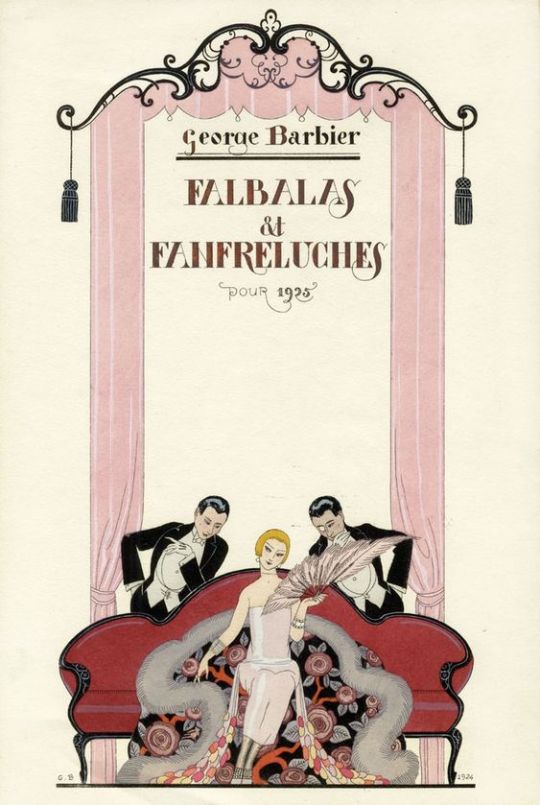
Is consumerism a visual symbol of modernity ? After all, the almost omnipresence of publicity in our visual world, which was definitely the case in the global world in the 1920s, is one of the ways in which that modernity, along with the dominion of capitalism that demands constant consumption from the people. As John Berger says in his foundational art history book Ways of Seeing published in 1972, which btw I totally recommend to get if you want to dive a bit deeper into art history theory, or you can just watch his 4 parts show of the same title which btw and i haven't said anything COULD potentially be on youtube but i haven't said anything at all. Anyway as he says quote : publicity images […| belong to the moment in the sense that they must be continually renewed and made up-to-date. Yet they never speak of the present. Often they refer to the past and always they speak of the future unquote. This was extremely relevant in the world of the interwar, where the construction in itself of the identity of the modern woman was made through those publicity images.
There is also something to be said about how the concept of modernity and of the modern girl truly blurs the lines of a social hierarchy., and that was a good thing, I do think those lines should be blurred to the point of non-existence. Now everyone could look like the popular starlets of the movies and buy their own makeup and clothes that could make them look as glamorous as the women on the silver screen, the easy availability of cosmetics, and of a climate of consumerism made it so that everyone could attain that status, the lines between the social boundaries and between the quote unquote elites and the working class are becoming more fluid than ever. Where the way you dressed immediately signaled your social rank and your place within the hierarchal structure, which, in turn, told other people how to treat you, this was no longer necessarily the case. However as those lines are shifting and moving, the way you could signal your status have also shifted.
The year was 1925 and Nell Brinkley, a young reporter and famous illustrator, was sending the first strips of The Adventures of Miss Prudence Prim out for publication to William Randolph Hearst’s Sunday American Weekly. Her stories of romance, love and carefree amusement were capturing the zeitgeist of this period that was the interwar: these years full of change and when modernity was at the forefront of culture. Born in the small town of Edgewater in Colorado in 1886, Nell Brinkley always had dreams of making art her career. At only 19 years old, after convincing her father that she could earn her life with a short contract as an illustrator at the Denver Post, she finally moved to the city where she would accomplish those dreams : New York. She came of age during the pinnacle of Edwardian sensibilities and was influenced by the ornate curves of Art Nouveau, but also by the new visual ideas of Art Deco. She created a style that was very unique for her time and was a woman who was constantly looking forward to the future. She was a perfect example of the New Woman of the 20th century. A woman that was bold, vibrant and who was not afraid to speak her mind. Her art was a vignette of a time that's now long gone by, and yet her art still feels as charming as it used to be. Those were delightful images of youthful fun and desire, ideas of romance, and, most surprisingly perhaps, issues of women’s rights and the working class.
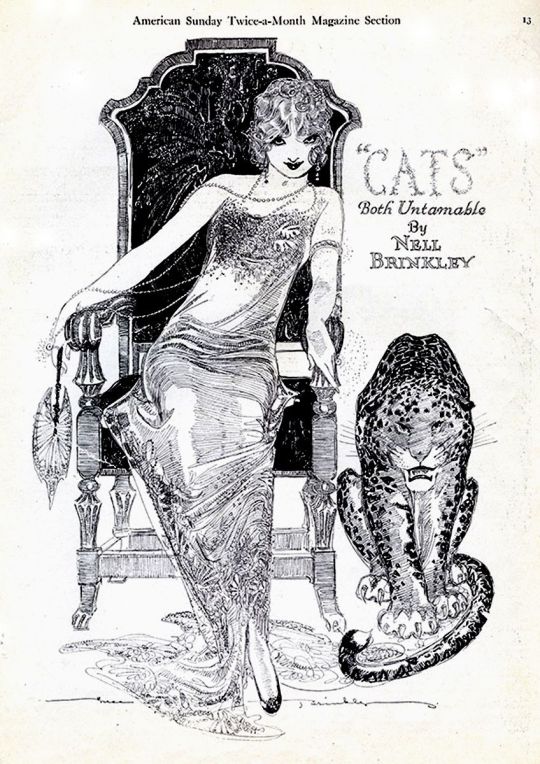
Brinkley got her start and her renown as an illustrator and journalist in 1907, while covering the gruesome and shocking case of Harry K. Thaw, a highly publicized trial involving the beautiful and popular showgirl Evelyn Nesbit. This case was sordid, involving a murder, a jealous husband, and a previous lover of Nesbit, and was a huge news story during that year. Brinkley’s interviews and various portraits of Nesbit put her in the limelight as a talented illustrator and reporter.
Commentator and columnist as well as an artist, the career of Nell Brinkley was prosperous and she was a constructing a new vision of womanhood. She was writing and drawing for women, and they were her direct audience. She wrote about cultural events, reviewed plays, gossiped about the latest fashions and movies. Her columns and her art were a guide to living fully and encouraging women to realize their full potential. Brinkley’s work had a definite feminist slant to it, in favor of working women and pushing for the rights of women. Her cartoons and illustrations had a decidedly political element to them that was part of the spirit of the times, about the endless possibilities that they carried within them. Without necessarily being an activist, she was always pushing for progress and women’s rights and trying to unshackle the constrictions of gender norms that were remnants of a previous generation. She was a writer as well as an illustrator, and this is how she communicated a vision of womanhood that was new and fresh, and she represented the way a lot of young women felt during these years. The New Woman, as she became known, was the face of a modern generation of women.
The archetypes of her illustrations were so strong that they were known as the "Brinkley Girls, » with their head full of short curls, their sleepy eyes and their darkened lips which brought a new vision of femininity. The Brinkley Girl was a break from traditional archetypes of beauty. She was no longer the demure and aloof women drawn by Charles D. Gibson that were in vogue. The Gibson Girl of the Edwardian era, with her long hair, her cold and distant beauty was now a thing of the past. The Brinkley Girls were far from being shy, and were not hesitant to take life as it came, and live fully and wholeheartedly. There was a certain desire of enjoying one’s life that was at the core of the illustrations of Brinkley. Emotion, passion and romance, as well as a sort of carefree independence were the new motto of a new generation of women who wanted to desperately have fun. It was an idealized idea of life and romance that provided a definite appeal to its audience.
The Brinkley Girl archetype was so widespread that it was used for advertising during the 1910s and the 1920s for diverse products that the modern woman would be using in her daily life. She was thus set as a symbol of the eminently modern woman. From hair curlers that « will not break your hair » to henna dye and face powder, the curly haired young women of Nell Brinkley were a good example of how illustration was used as part of advertisement in the early 20th century, blurring the lines between art and capitalism. The Brinkley Girl was known in the cultural sphere as being a symbol of a new generation of young women who were fearless, representing a vision of womanhood that was progressive and a celebration of independence as well as pleasure.
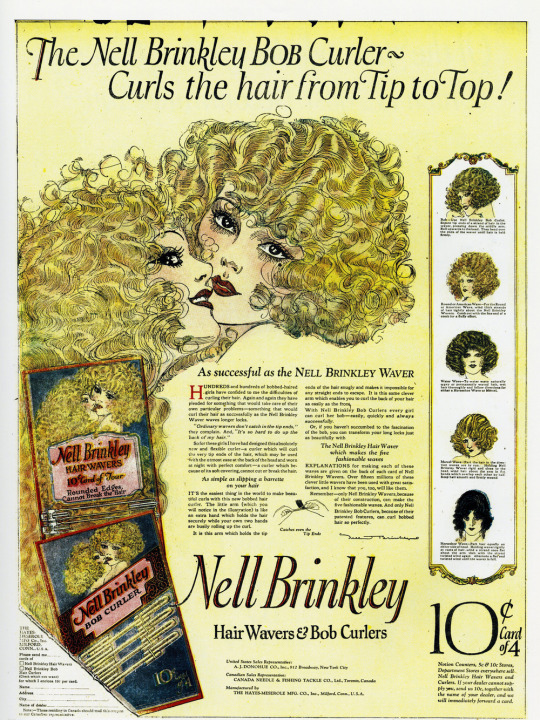
In the 1920s, her art involved sequential images and interesting stories, all starring young women as the main protagonists and centering their point of view. Starting with her serials in the 1910s and steadily creating comics during the rest of her career, she was an incredibly prolific author. From 1918 and onwards, most of her comics were full page and full color, a privilege reserved for very few artists during those years.
The Adventures of Prudence Prim, written by Carolyn Wells and illustrated by Brinkley, follows the life of a young lady who lives with her two sensible Edwardian aunts, and who has dreams of romance and adventures. Prudence takes the opportunity of her aunts taking a nap to go out and experiencing life for herself, after all « now if I just sit still and do exactly as I ought - I’ll never get a thrill ! » And so the adventures of Miss Pruddy Prim begin ! They are told each Sunday as she lives through new experiences and goes out and wears glamorous and fantastical ensembles. The pages are peppered with the different characters that Prudence Prim meets during her adventures, from society ladies with beautiful clothes and bobbed hair to dashing suitors who sweep her off her feet. Brinkley truly takes the time to dress all of her characters in fanciful outfits to match the universe she creates. The story is told by small, witty verses with a lot of good humor. Those narratives capture a certain desire for escape and the new daring sensibilities of young women, of their hunger for love and life. It is complete with the details of the latest fashion and decorated with illustrations of roses which will eventually influence the style of shoujo manga in the 1970s, with its abundance of roses, the drama, and extravagance of feelings.
The art of Brinkley creates a very indulgent feminine universe, where the men are dashing and noble, but still drawn in a very feminine way. It is in line with the slight gender fluidity of the time, where men were more delicate and women were cutting their hair short. Nonetheless, her worlds were utterly feminine and yet were trying to change what this world meant for the young woman of the interwar period — to leave the past behind and move toward the future and document the rapid changing social norms for women. Her style is especially striking in its transitional quality between art — the heavily ornamented and rounded lines of the Art Nouveau years in which she came of age and the streamlined and fashionable lines of Art Déco. It is a style that found a lot of admirers, but also a lot of detractors. She truly made her signature style one that captured the new woman of the era. She captured a very specific moment in time and the way women might have understood themselves. This understanding was not universal, however it captured the way American women wanted to visualize themselves. The way they wanted to represent and depict their future. It was an ideation that was becoming reality. In a way, Brinkley was creating the future through her art. Of course, she was not the only one. She was simply part of a moment in time, but I do have to say that Brinkley, with her frothy pictures and her fanciful curves was successful in a way a lot of artists were not.

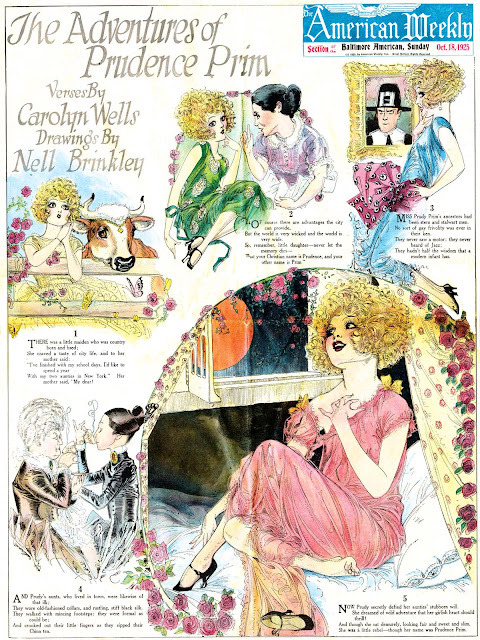
To me, she represents a very feminine idea, and to me, this type of art often receives criticism simply for daring to be feminine, maybe a bit shallow, maybe a bit superficial, but after all very cute and very fun. The rococo genre of the 18th century received similar criticisms in my opinion for being sugary and cute and overtly feminine. And this is simply always an unfair criticism to me, because judging something being aligned with femininity negatively comparatively to something more masculine is just plain old sexism. It’s not that the genre of rococo is devoid of criticism, there can be much to criticize, but people mostly bring up the fact that its frilly and pink and for some reason, that means it is not a sign of serious art. After all, this is what the neoclassical movement that followed was about. Something more visually sober, and more serious in its subject. And once again, the pendulum of taste swings.
Nell Brinkley was interesting as an artist that had this idea of the new woman being at the center of all the work she was doing. She was active during an era of profound change in the way women were perceived and perceived themselves, and whose art was something that was created solely for the modern woman. Brinkley was a daring and brave woman, with a taste for excitement and joy. She did not back down from any challenge; she flew a biplane in 1914, illustrated it, and commented on it for her audience's pleasure:« Nell Brinkley Tastes Joys of Real Freedom Soaring in Clouds ». She had adventures of her own and lived a full and brazen life. She got married to Bruce McRae II in 1920, and then she divorced him. I have to mention that he was several years younger than she was, so she was breaking boundaries in all sorts of ways,
She was a mother but also a career woman, and always followed her heart and ambitions no matter where they took her. Despite knowing a widespread cultural and financial success during her time, Nell Brinkley went the same road as many successful women artists often do, and was subsequently rapidly forgotten by history apart from the niche academics and amateurs of early 20th century comics. What she accomplished was no small feat. She managed to create this pictorial universe that understood the preoccupations of a modern woman, from her leisure to work to romance, from her activism to her frivolities, and how to balance all of it. She was a modern woman through and through.
This archetype of the modern girl is an intrinsic part of national identity and how those identities shaped the way she was understood and the way she was perceived by the general public, not only domestically but also internationally. She was also used for pushing political agendas either as to how the youth, and especially young women, were out of control, and trying to reassert the previous order of things, were women were not going out partying at all hours of days, and were expected to stay home. Or, on the flipside, using those young women living their lives as a political statement about how much more modern and civilized she was compared to the quote unquote retrograde societies and traditions. And this happened not only in the western world, but in Russia, India, China, Japan and elsewhere. From the illustrations and caricatures of Guo Jianying who satirized this new type of modern woman in China, with jokes and piques about the way things were changing, and changing fast, to the ads in various news papers across the world that promised their customers beauty and pleasure.
During the interwar, the illustrated advertisements for the brand Shiseido, a brand that started in 1872 and still is a sizable part of the beauty landscape today, and that revolutionized the market for the modern woman in Japan, were at the intersection of art, design and advertisement. These images were ones that were communicating an idea of modernity and newness, and yet advertised products that helped the consumer access this new ideal and be able to adhere to the beauty standards of the era, that were particular to Japan.

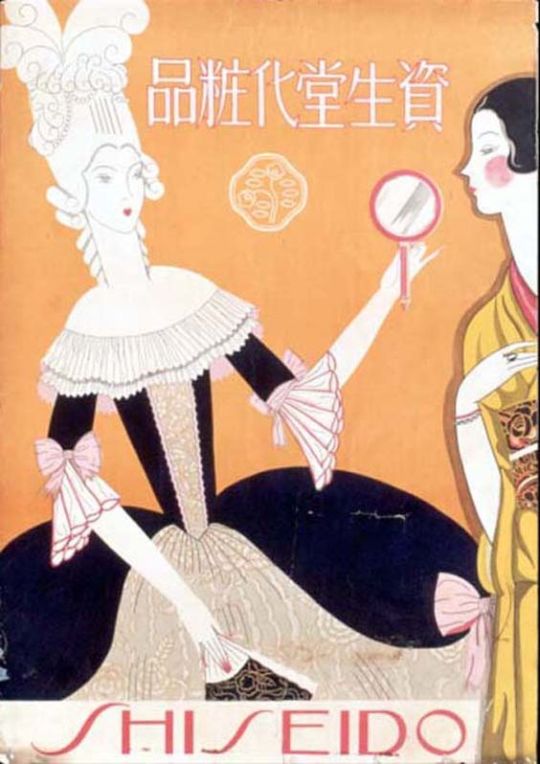
Shiseido’s graphic design communicated an idea of chic elegance that was becoming an aspirational quality during the interwar. The poster design by Sawa Reika in 1927 shows a young blonde woman wearing a fashionable evening dress holding a camelia flower, the brand’s logo, which was designed by Yabe Sue in 1924, all with the streamlined aesthetic conventions of art deco, and a limited palette of colors The result is minimalist and beautiful, and conveys so efficiently this new type of lifestyle and modernity that was being created, all through the use of graphic designs and cosmetics advertisements.
Even though the concept itself the of womanhood during the interwar was a mix of effervescence in the way it developed and grew and changed, and how, it stayed the same in a lot of ways. The illustrations of journals and magazine covers such the covers of the german graphic design journal « die reklame » in 1929 by Albert Rabenbauer were just another way the image of the modern woman got used in the art and the advertisements, not only helping to construct the idea of a modern woman, but the way that cosmopolitanism and the life in the urbane centers, full of the busy bustle of cities is just another way young women could enjoy a certain anonymity and freedom.
The idea of a chic and cosmopolitan world of material goods, of parties, of champagne and music, of a worldly but extremely fun woman at the center of it was one that was dominating the imagination. Ethel hays had small comic illustrations in the papers that satirized and caricatured that specific archetype of the flapper. Her character « Flapper Fanny » was the woman who was fashionable, a bit silly and yet, still very witty. Hays’ illustrations are extremely adorable, and manage to land a joke or a line with only a small drawing. The modern woman, the flapper, the gamine, this idea of the intrepid fashionable new woman was constructing itself in reality and also through the art, the illustrations and the visual representations of her in the advertisements and those, in turn, helped shape the way that the modern woman saw herself. Despite what she represented about this new era, being used to express concepts of modernity, a fear of change when women are going out and gaining those newfound freedom, being bolder and more in touch with their sexualities and their expanding idea of femininity, these women were still people and not only concepts about which people could discourse and debate, and I think this is something that is quite often forgotten.



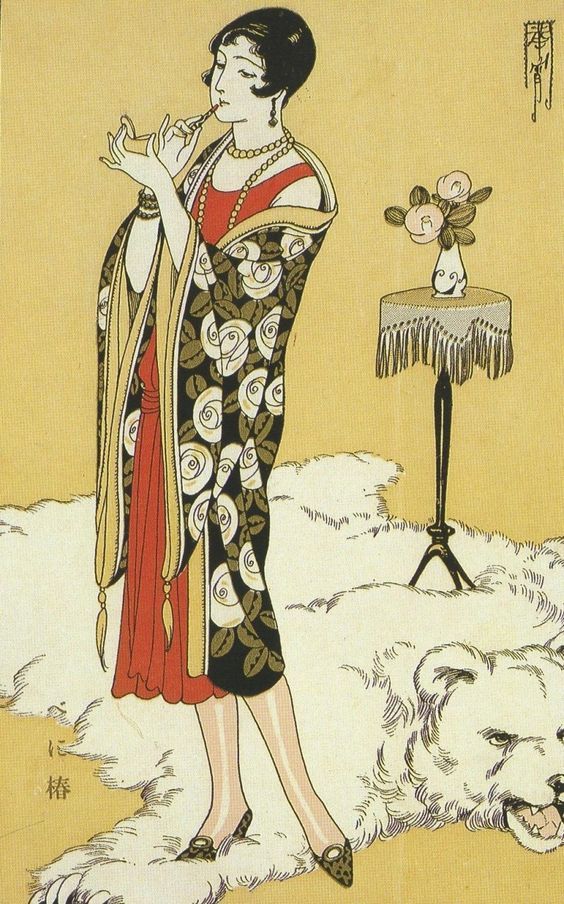

14 notes
·
View notes
Text


Baker Motor Vehicle Company Building
7100-7122 Euclid Ave.
Cleveland , OH
The Baker Motor Vehicle Company Building, also known as the Baker Electric Building, Baker R&L Company, and A.L. Englander, is a historic commercial building in Cleveland, Ohio. Built in 1910, it was the first showroom of the Baker Electric Motor Car Co., a pioneer in Brass Era electric automobiles. Baker Electric merged with Rauch and Lang in 1914, and the building was sold in 1920. It served as an auto dealership, machine shop, and print shop for the next 86 years. The structure underwent a two-year renovation and historic preservation from 2006 and 2008, and now serves as a startup business incubator.
The site that would become the Baker Motor Vehicle Company showroom was originally a residence. From the 1860s to the 1920s, Euclid Avenue in Cleveland was known around the world as "Millionaires' Row" for the extensive number of mansions and fine homes that lined the street. The lot at 7100 Euclid Avenue had a Euclid frontage of 150 feet and an East 71st Street frontage of 450 feet. The house and property were owned by Alonzo F. Winslow, who began managing the American House hotel in Cleveland in 1852. He invented the Winslow corrugated roof iron for railroad freight cars and the Winslow stove for use in railroad passenger cars, which made him a wealthy man. He was a member of the Cleveland City Council from 1857 to 1858, and was elected Cuyahoga County Sheriff in sheriff in 1874. He died in 1908.
In early 1909, the Winslow House was sold to the Baker Electric Motor Car Co. and demolished. The new structure was designed by local architect Frank B. Meade in a mix of Early Commercial and Mission Revival styles. The building faced Euclid Avenue, and was 160 feet wide and 200 feet long, and set 50 feet back from the street. The Baker Electric Motor Car Co. building was first occupied on May 2, 1910. The showroom was utilized by both Baker Electric and Standard Automobile Co. salesmen. Faced with significant competition from the gasoline-powered automobile and declining sales of electric cars, Baker Electric merged with the Rauch & Lang Carriage Company in 1916. Production of electric passenger vehicles ceased in 1919. In 1920, the building was sold to the A.L. Englander Motor Co., which used the showroom to sell Hupp Motor Cars and, later, Pontiacs and Buicks. Englander closed its doors in March 1942, and the building was sold to the A.W. Hecker Co., which used it as a machine shop. The building was purchased by the newly formed GCC Corp. for $100,000 in July 1966 for use as a print shop. The building was renovated from 1980 to 1985 at a cost of $100,000. GCC's parent company closed the print business in 2000, leaving the building empty.
Cleveland developer Dick Pace in 2006 purchased the still-empty structure for $780,000. Over the next two years, Pace spent $7 million transforming the building into laboratory, light industry, and office space for startup companies. The building was added to the National Register of Historic Places on February 21, 2007, for its association with the Cleveland's automobile industry and the electric automobile, and Pace received extensive historic preservation tax credits[e] which paid for 40 percent of the renovation's cost. The showroom windows were unbricked, the dropped ceiling and drywall removed, and the original ceramic floor restored. By 2009, the Baker Motor Vehicle Building was 70 percent occupied. In 2010, the city of Cleveland installed one of the first public electric vehicle recharging stations at the Baker Motor Vehicle Building—bringing electric automobile charging back to the building 90 years after it was removed.
0 notes
Text
The Princess and the Fools AU
(Set in late Edwardian 1910’s to early 1920’s inspired Alternate fantasy universe setting)
Vanessa, Daughter of a Duke, receives a gift from her Uncle George Harris, a living automation Jester companion. The automation was meant to provide Vanessa company after the loss of her twin sister. But due to the length of time it took to create this advanced complex automation, Vanessa had just turned 20 upon receiving the gift.
At first, she wasn’t impressed and thought poorly of the automation. Finding various faults in personality and childish entertainment. However, as time passed and she and the automation got used to each other, Vanessa finds the thing to be more alive than she originally thought. And with two personalities based off of the Sun and Moon, she becomes slowly intrigued by it.
Vanessa finds herself threatened with a matched betrothal by her father for business purposes. She disagrees vehemently, especially as she despises the son of the business partner and dares to argue with her father for some time. Saying she rather marry the jester than that man. Her father, in a fit of pettiness, tries to humiliate his daughter by setting up a marriage of exactly that.
In a week’s time, she will marry the automation and be mocked by everyone for it. She will live in a shabby shack with her mock-husband until she learns humility and to stop her defiance.
During that week, Vanessa and the automation slowly become closer together. Vanessa finding her groom to surprise her more as they admit to a lot of things to her. The most notable confession being how they have been attracted to her since laying eyes on her and have grown to love her deeply.
“We will never raise a hand to you. Never harm you in any way. Never abuse this arrangement with you. We only wish to love you. Holding your hand…it would be enough for us.”
Vanessa stared at Sun/Moon with wide eyes and is unsure of how to respond to the look in their optics. She had noticed it many times before and could never place it. Now she can and her stomach flutters nervously.
Somehow, being loved by an automation doesn’t seem so bad.
In fact, it seems preferable to any other ‘love’ she may have ever known with any other would be groom.
She takes their hand at their wedding and ignores the laughter, whispers, and mocking voices of everyone there.
Her father will have her first marriage annulled once she’s learned her lesson. But he will make sure everyone will remember this wedding.
She will not be welcomed back into the estate.
She has her shack to live in with her new husband.
In a quiet moment though, with everyone gone and the chapel empty, there is a private moment between them.
Of vows exchanged and a kiss that turns to a few more kisses with candlelight all around them.
The Moon whispers she looks beautiful in her wedding dress.
The Sun worries it will be dirtied by the mud and grime outside when going to the shack.
Vanessa does not care.
She only wants to get the journey over with so she may rest and gather herself.
The Moon still tries to carry his bride away and not dirty her dress or veil but it was all for naught.
The shack was shabby indeed with holes on the roof and a squeaky door barely hanging on. Broken windows and rotting wood. It was much too small to fit the both of them comfortably.
“I know of a better place.” The Moon says, setting down his bride and plots. “I shall fetch you different clothes and bring you to a warm and safe place. Just wait here.”
Vanessa waits as Moon goes to steal clothes from a neighboring house and comes back to his shivering new wife. She does not comment on the boy clothing and is helped out of her dress into the warmer fabrics. She clutches her jewelry, knowing they will fetch plenty of coin, and follows her now husband to the lower districts where a tavern welcoming both automation and human patrons is spotted.
Vanessa’s father had wanted her miserable and cold in the shack. Not warm and comfortable in a room and bed.
But what sort of husband allows his wife to be cold on their wedding night?
For several days, using her jewelry to pawn off for coins, they stayed in that tavern together. The Sun and Moon plotting on what to do next while their wife thinks. Finally, one night, Vanessa is offered by the Moon to kill her father. That way, she can take over the household as his only heir and do whatever she wants with her newfound freedom. Even annul the marriage. Marry or not marry someone else.
Vanessa wants to runaway instead.
Far, far away.
With them.
She gives them the choice and they chose her with a kiss.
They snuck back into the estate to gather whatever belongings Vanessa needs. Whatever they can carry. With some teasing from Sun that she could use less of certain items while helping her pack. Vanessa sneaking into her father’s room and office to gather papers and money for them to use. Avoiding the servants in the estate, they quickly make their escape to the nearest train station and set off to a far away area. Vanessa disguised as a boy for her own safety and the automation painting their face and hiding their rays while dressed in worker clothing due to how recognizable they were.
Once they were far enough away, at the very borders of the kingdom, they arrived at a rural town consisting of automations and humans. The Northern west borders were more liberal with human and automation relations than the inner areas.
Stepping off, Sun was quick to find an abandoned home to claim as their own and set off with Vanessa to settle in. Doing a majority of upkeep of the place while Vanessa adjusted to her new life. It was slow and frustrating at times as she thinks she’s doing something right but ends up being corrected. Her soft hands now blistered, legs and back aching, and sweating from the labor her husband help instruct her to do as they do their own.
No longer was she living as an upper class privileged daughter but a working woman building a farm with her husband. Excited when chickens and a donkey were brought home by them as they started their new life with hopeful optimism.
There have been complaints.
Some petty arguments.
A bit of cluelessness and bitterness over the unaccustomed work.
But Vanessa was stubborn and she was willing to see it through.
And if she was honest, there was a liberating pride when it came to working with her hands and gaining something from it.
It also helped that the kisses she received from her automated husband had her feel as though she were floating.
She had enjoyed their talks on the journey here and after. Never realizing they too had wants and hopes of their own. They had learned from their creator many things and while they admitted the delay of their deliverance to her was deliberate for their own development and learning, they were also scared. They did not know what kind of person they were supposed to be gifted to and had cleverly thought of many ways to delay their arrival. Hoping that by the time they did arrive, the person might be too old or get bored quickly. Then they can be tossed away and be free without any troubles.
But then, when they finally did arrive as the gift that was promised, they saw…
“Your eyes.” Sun had whispered, helping Vanessa take down a bowl from a high shelf. “They were the greenest, prettiest eyes we have ever seen.” The Moon peeked out with one red eye.
Vanessa flushed when handed the bowl and her fingers brushed with theirs.
“We saw you. We saw you and only had a sudden desire to see you smile. Because you were frowning so much. We wanted to make you smile.”
“…..I remember. You were staring at me. I had been uncomfortable with the staring.”
“Ah.” They looked away, rays spinning and a sheepish expression on their faceplate. “Sorry. We did not intend to make you uncomfortable then.” Pulling their hands away from hers with the bowl secure, they stepped back. The Moon retreating to sleep. She stepped forward.
“No, no, it’s fine. It’s past and done now.”
“Still-”
“No-”
They keep interrupting each other as Sun kept stepping back, bumping into the wall behind him while Vanessa set the bowl down on the counter and went after them. Their legs got tangled together and Sun caught Vanessa by the arm before she fell. Holding her up and stared down at her. Lost in her wide green eyes.
“….I…” Sun made a noise in his voice box. “I…want to kiss you so badly now.”
Vanessa raised an eyebrow. Pushing herself up and placed her hands on his chest. Silent for a moment.
“Why aren’t you?”
Sun kissed her.
He kissed her long and deep.
He shuddered at her sigh.
Breakfast was delayed for a bit that day.
The Moon came out when Vanessa cut her hand on some chicken wire. Guiding her away to treat her wound with a wash and cleaning. Sitting on his lap as he bandaged up her hand and told her to be careful.
The Moon waited for her to get up but she did not.
“Trying to get out of working today?” He chuckled, seeing her flushed cheeks as she neither denied nor admitted to it. “I have to go fix the roof, you know.” Moon goes to stand up, not minding if he potentially rolls his wife off of him in the process, but stops at arms wounding around his skinny neck.
“Can’t it wait for a little while longer?” Vanessa asks, trying to pout. Instead, she got her face grabbed and cheeks squished. Causing her to squirm and make loud irritated noises.
“No.” Moon giggles, letting go of her face to pinch her cheeks. Making her growl and swat at his hand. “Come on, get up and go before I toss you off.”
“You’re no fun.”
“I am plenty of fun. But what’s that? Someone wants to be tossed into the lake again?”
“Don’t you dare!”
Moon grins fiendishly at his wife.
Before he can scoop her up and start his march to the nearby lake though, Vanessa leaned in quickly and kissed him.
He froze.
His inner working clicking and whirring loudly.
Moon only became animated again when Vanessa leapt up to try and make a quick escape. Shrieking when grabbed and dragged back on to his lap only to laugh at the peppering kisses all over her.
“Moon, we need to get back…haha!”
“No. I’m busy.” Moon nuzzles her head, smiling widely with a lovesick air around him. Kissing her again as he holds her close and squeezes. “Too busy.”
Vanessa snorts.
“Weren’t you the one who said-?” She was silenced by another kiss and rolled her eyes before giving in.
The roof was eventually fixed fully and just in time for a heavy rain fall.
Vanessa curled up under the warm covers while Sun checked on the chickens and donkey sheltered away from the rain. She peeked up from the covers and snorted at Sun returning. He was soaked from head to toe.
“Decided to go for a swim?” She teased, sitting up and dragging a blanket over her shoulders.
“Yes and I sunk to the bottom.” Sun replied, taking off his dripping shirt and pants. Wringing them out and sought out something to hang them to dry. All the while Vanessa quickly moved off the bed to the fireplace. Throwing a few logs in, she started a fire to warm up the home. “Luckily the barn was still intact when we came here.”
Sun did not notice Vanessa’s approach until she wrapped his middle up in the blanket with her in it.
“Nessie, I’m still wet.”
“Then dry up already so I can have my cuddle companion on this rainy day.”
She did not let Sun change into clean clothes once he was dry. Only demanded him to crawl under the covers with her to cuddle. Giving into her demands with a laugh.
Winter was hard when it arrived.
They lost three chickens to foxes and nearly lost their donkey to sickness. Vanessa tended to the poor animal daily until she was better.
Unfortunately, Vanessa herself fell sick and she fell hard.
Shivering and pale under the fur covers, she tossed and turned while sweating profusely. Whimpering as her husband made her drink broth and take medicine from the nearby town’s doctor who checked up on her. She sobbed from the aches of her body, frightened by how her body was ravaging itself. Coughing hard enough to spit up blood.
Sun and Moon were terrified at the sight.
They did not leave her side unless they had to.
Holding her hand, letting her vent and cry, and kissed her burning forehead every so often.
They whispered ‘I love you’ like prayer in desperate hope she would get better soon.
By the time the fever had run it’s course and the sickness started to go away, the snow had fallen heavy and piled up outside. Sun having to go out to clear out the area and check in their animals. By the time he returned, Vanessa was sitting up on the bed and looking outside.
Sun crossed the distanced and covered her quickly with a fur blanket.
“I feel…better.” Vanessa told him. Still aching with sickness but the worst of it had gone away.
“Lay back down and rest, love.” Sun started to push her back down but she refused.
“No. I’m tired of laying down. Let me sit by the fire.”
“Vanessa, I don’t think that’s a good idea.”
“I need to get out of this bed. If you don’t, I will scream.” Vanessa’s voice was hoarse and she coughed long and loudly into her hand. Wincing at how sore her throat is but at least she was no longer spitting blood.
“Alright. Alright.” A defeated Sun spoke as he bundled up his wife and carried her to the rocking chair. He placed her in it and went to get a kettle and make some tea.
“I am feeling better.” Vanessa told Moon the next day. Resisting being placed back into bed.
“For our peace of mind, please, go back to bed.” He pleaded, his white eyes staring into her tired green. “Please, please, just rest a little more. For me.”
Vanessa reluctantly went back to bed. Huffing at Moon petting her head and humming a lullaby to her.
She was fully recovered two days later.
Winter had past.
She survived her first winter.
Sun and Moon were going to make sure she will survive future winters to come.
251 notes
·
View notes
Note
I've just gone down the rabbit hole in your Rachel and co tag and I must know more about Aunt Lilly. She seems like such an interesting woman

Oh where to even start with Lilla lol
Lilla was the younger half-sister of Rachel’s father and Will’s father. Their mother (Rachel’s biological grandmother) had died when they were very young, and their father (Rachel’s grandfather) remarried to the woman Rachel would grow-up calling Grandma. Lilla was the only child from that second marriage and was almost 18 years younger that Rachel’s father.
She attended Vassar in the 1870s, a period where very, very few women went to college.
Lilla never married, and I have yet to find any indication that she ever had any intentions to. She was 36 when the letters start (1895), and living with her mother and a woman named Emma, who had been her mother’s companion for most of Lilla’s life.
She traveled widely and rarely stayed in one spot for long, usually staying with friends she had all over the country and attending theater and musical performances, as well as various academic lectures and salons. Her friends and acquaintances included such fascinating people as: Abby Sage Richardson (whose ex-husband shot and killed her lover, a journalist and Civil War spy, but was acquitted in a farcical trial that made headlines around the world and was written about by Mark Twain), “Hoppy” Smith (one of the best selling authors in the country at the time and also the designer the base of the Statue of Liberty) and Fanny Garrison Villard (suffragette, co-founder of the NAACP, and daughter of famed abolitionist William Lloyd Garrison).
Lilla had strong opinions about everything and rarely censored herself, employing sarcasm heavily in everything she wrote. She was very politically active even though she herself would not be eligible to cast a vote in a presidential election until she was 61.
She was very clearly the favorite aunt of all her nieces and nephews.
“I would the letters N. A. after my name whenever I sign it, as I can never write L.L.D. or D.D. or M.D. or any of those titles, but I should hate to have to explain that the letters did not mean National Academician, but “Nicest Aunt.””
Her solution to being stuck inside with her young nephew Biff one rainy spring was to turn the upstairs hallway of her house into an indoor shooting range, complete with taxidermied animals as targets.

Later in life Lilla appears to have settled down a bit and became very active in various charities involving public health (focusing especially on tuberculosis treatment and awareness). She was on the board of the New York Charities Aid Association and was involved in efforts to get the state of New York to set up individual county health departments.

Lilla lived until 1951, dying at the age of 92 - outliving many of her nieces and nephews. She was born before the Civil War began and lived through both World Wars. She grew up when train travel was still new and would live to see jet planes break the sound barrier.
Her home was donated to the local hospital upon her death to provide housing for nursing students. It’s still standing, and I’m curious how many bullet holes are still present.
(The top photo was taken during the period the letters were written (late 1890s), the bottom likely in the late 1910s or early 1920s. Both were kindly shared with me by Dan Perez de la Garza, the great-grandson of Lilla’s niece Flora.)
508 notes
·
View notes
Text
Anonymous asked: I love your long posts which make for great reading and I wish you could do more because you’ve got such a range of astonishing interests. I’m hoping because you’ve served in the military you would have studied military thinkers. Do you think the Art of War by Sun Tzu is way overrated by everyone? I studied him a bit for my masters but I still couldn’t get my head around him. Interested to know your thoughts. Thanks!
“To lift an autumn hair is no sign of great strength; to see the sun and moon is no sign of sharp sight; to hear the noise of thunder is no sign of a quick ear." - Sun Tzu's Art of War, Chapter IV - Tactical Disposition, Clause 10.
Sounds cool, doesn’t it?
But what the hell does this quote really mean? Do you know what it means? Can anyone else tell me?
Look, I enjoy a good Sun Tzu quote as the next person. Only recently I was exchanging thoughts with a fellow blogger whose studying Thucydides, Clausewitz, and Kissinger for an advanced course at the US Naval War College. Even he prefers Sun Tzu over Clausewitz. I can see why too. If you can make sense of chapter one of Clausewitz’s tome On War you deserve a Nobel Prize.
Unlike my very learned fellow blogger, there are lot of folk who don’t know Sun Tzu at all. They can quote him, but almost certainly out of context. As someone who partly grew up in the Far East and even learned Chinese and Japanese (a pitiful but functional degree of fluency) I’m embarrassed (not hard since I’m English) when I hear other Western compatriots romanticise and elevate Eastern icons to mythic status that the Chinese themselves have never done.
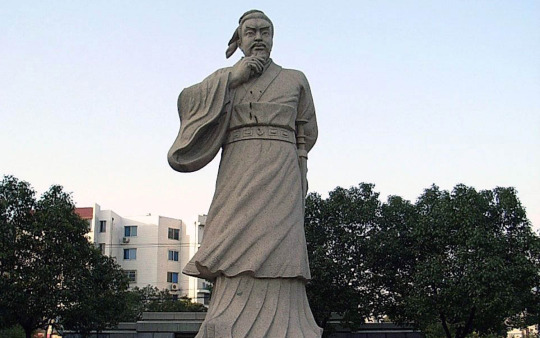
I am even more bemused than embarrassed after having hung up my military uniform for ‘civvy’ corporate clothing at how badly abused Sun Tzu’s book is in the corporate world. In my workplace I grit my teeth at corporate high flyers who mistake a balance sheet for a real battlefield by quoting Sun Tzu out of their arse, and then as self-styled ‘corporate warriors’ work themselves up in a lather of testosterone induced self-importance to crush their corporate enemies into the dust.
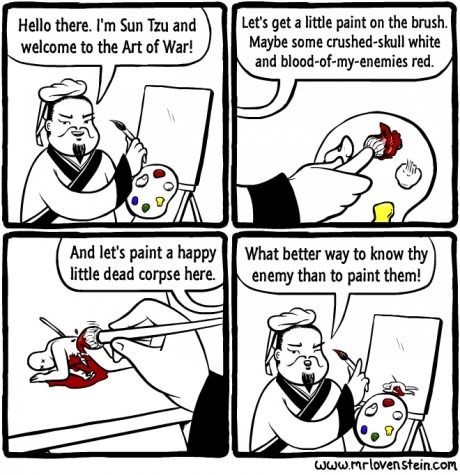
This is why the The Art of War by Sun Tzu has invited a jaundiced eye roll. And rightly so. I can see why many view Sun Tzu as over-rated because many easily impressed people go all woo woo over anything ancient and Eastern.
It’s become a familiar trope to say the art of ‘strategy’ as a science began 2,500 years ago with the writing of The Art of War. I would dispute this. Not that the writing of Art of War was the earliest written but whether I would call it a manual of strategy per se - more on this below in my answer. However you rate or overrate the Art of War it’s important to have perspective and remember this book is written in 512 BC. Other than the bible and some religious books, there are not many books that can survived thousands of years and still remains a steady bestseller and enjoys a wide influence in military academies and army staff colleges today and even as far into board rooms.
The question behind your question is just as interesting to me: why did Sun Tzu and his Art of War gain such traction in the West?

Sun Tzu (544-496 BC) wrote the original text of The Art of War shortly before 510 BC. During most of the past two thousand years, the common people in China were forbidden to read Sun Tzu's text. However, the text was preserved by China's nobility for over 2,500 years. The Chinese nobility preserved the text of The Art of War, known in Chinese as Bing-fa, even despite the famous book-burning by the first Emperor of Chi around 200 BC. The text was treasured and passed down by the Empire’s various rulers. Unfortunately, it was preserved in a variety of forms. A "complete" Chinese language version of the text wasn't available until the 1970s. Before that, there were a number of conflicting, fragmentary versions in different parts of China, passed down through 125 generations of duplication.
Indeed at the beginning of the twentieth century, there were two main textual traditions in circulation, known as the (Complete Specialist Focus) and (Military Bible) versions. There were also perhaps a dozen minor versions and both derived and unrelated works also entitled Bing-fa. Of course, every group considered (and still considers) its version the only accurate one.
When I last visited China before the Covid pandemic for work reason, I had time off to go to a couple of museums that housed the fruits of a number of archeological digs uncovering the tombs of the ancient rulers of China in which sections of Sun Tzu’s works were found. These finds have verified the historical existence of the text and the historical accuracy of various sections. I understand new finds are still being made.

The first complete, consistent Chinese version was created in Taipei in the 1970s. It was titled The Complete Version of Sun Tzu’s Art of War." It was created by the National Defence Research Investigation Office, which was a branch of Taiwan's defence department. This version compared the main textual traditions to each other and to archeological finds and compiled the most complete version possible.
This work was completed in Taiwan rather than mainland China for a number of reasons. Mainland China was still in the throws of the Maoist Cultural Revolution, which actively suppressed the study of traditional works such as Sun Tzu. The mainland had also moved to a reformed character set, while Taiwan still used the traditional character set in which the text was written. Only today is the study of Sun Tzu in mainland China growing, interestingly enough, through the translation of Sun Tzu into contemporary Mandarin. Based on the archeological sources we have today, we are reasonably certain of the historical accuracy of this compiled version that is the basis of what most people use today.
Surprisingly, the Art of War only came to light in the West around the 18th Century.
Historians believe it was first formally introduced in Europe in 1772 by the French Jesuit Joseph-Marie Amiot. It was translated at the time by the title “The thirteen articles of Sun-Tse”. Joseph-Marie Amiot (1718-1793) was not just a Jesuit priest but also an astronomer and French historian, as well as fervent missionary in China. He was one of the last survivors of the Jesuit Mission in China (he died in Beijing).

Many of the historical problems with understanding Sun Tzu's work can be trace back to its first Western translation in French. A Jesuit missionary, Father Amiot, first brought The Art of War to the West, translating it into French in 1782. Unfortunately, this translation started the tradition of mistranslating Sun Tzu's work, starting with the title, The Art of War (Art de la guerre).
This title, copied the title of a popular work by Machiavelli (a criminally underrated writer on military strategy), but it didn't reflect Sun Tzu's Bing-fa, which would be better translated as "competitive methods."
We cannot say what effect being translated by a Jesuit priest had upon the text. It was unavoidable that the work's translation reflected the military prejudices of the time era when war was both popular and Christian. It was also unavoidable that most future translations would reflect some of the first translation's prejudices. However, war was on the verge of becoming much less Christian in the West since this time was the era of the French Revolution (1789).
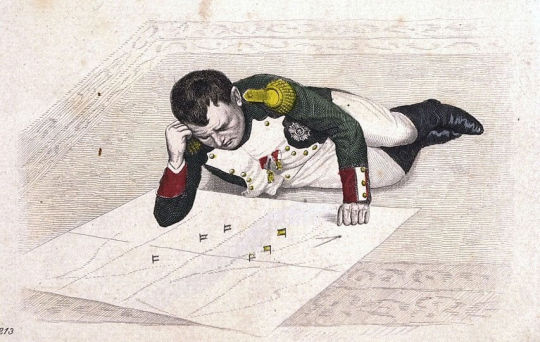
The work might well of slipped into obscurity after its initial publication, but it was discovered by a minor French military officer. After studying it, this officer rose to the head of the revolutionary French army in a surprising series of victories. The legend is that Napoleon used the work as the key to his victories in conquering all of Europe. It is said that he carried the little work with him everywhere but kept its contents secret (which would be very much in keeping with Sun Tzu's theories).
However, Napoleon must have started believing his own reviews instead of sticking with his study of Sun Tzu. His defeat at Waterloo was clearly a case of fighting on a battleground that the enemy, Wellington, knew best. Wellington’s trick at Waterloo was hiding his forces by having them lie down in the slight hollows of this hilly land. This is exactly the type of tactic Sun Tzu warns against in his discussion of terrain tactics.
After Napolean, Sun Tzu's theories made their way into western military philosophy. Many of his ideas are reflected in the ideas of work of Carl von Clausewitz. who defined military strategy as "the employment of battles to gain the end of war."
The first English translation of The Art of War is less than a hundred years old. Captain E. F. Calthrop published the first English translation in 1905. Lionel Giles, an assistant curator at the British Museum and a well-known sinologist and translator, attacked this early translation, and he published his own version in 1910. It soon began to be read alongside Clausewitz’s 8 volumes of turgid German military prose.

It wasn’t long before military thinkers were ditching Clausewitz for Sun Tzu because no one could get past Chapter One of Clausewitz’s On War. The “Clausewitz is dead, long live Sun Tzu” school was first championed by the influential British military theorist B.H. Liddell Hart in the 1920s. Basil Henry Liddell Hart (1895-1970) was a captain in the British Army. He was a very influential military theorist and historian, and author of several books such as The Future of War (1925) and Strategy (1954). Having witnessed first-hand the mechanised onslaught of the Great War, Liddell Hart sought a philosophy of warfare based in the prudent use of technology, psychology and deception - and the avoidance of the 'total war' catastrophes of preceding decades.
The main idea of Liddell Hart is to bring the set of principles of warfare in a so-called ‘indirect approach’ to the enemy. His advocacy in his scholarly work of an ‘indirect strategy’ over direct, frontal operations, was a reaction to the high casualties of the Western Front in the First World War. But his ideas were not simply about physically outmanoeuvring an opponent. Instead he pushed for a psychological scheme: to strike from unexpected directions, to generate strategic dissonance, and to induce paralysis. Hart’s well-known thoughts are “Only short-sighted soldiers underestimate the importance of psychological factors in time of war”, “Originality is the most important from all military virtues”, and “The principles of war could shortly be condensed in a single word: concentration”.

Liddell Hart believed that distilling historical insights of strategy and operations would offer the chance to avoid the costly disasters of modern war and ensure a more cost-effective route to success. He imagined technological solutions in the form of air power and mechanised land forces outflanking and shocking an enemy at the tactical level. This would be complemented by taking indirect strategic ‘ways’. Like his contemporary J.F.C. Fuller, Liddell Hart considered concentrations of air and armoured forces driving deep into enemy territory to destroy their ‘nervous system’. The psychological aspects of this were central, since acquiring an advantage demanded moves that were unexpected, with precise attacks at the most vulnerable points. As the most influential military writer of the modern age, revered and reviled by three generations of strategists, armchair and armipotent, his controversial theories of armed attack laid the foundation of the famed German Blitzkrieg.
Hart’s championing of Sun Tzu’s work as articulated through his own works got a new lease of life as the world gingerly settled into the ice bath of the Cold War. The rise of Communist China, against all the odds having defeated the well disciplined nationalist armies of Chian kai-Shek, was a wake up call for the West. There was a general befuddlement among western military analysts to explain the secret of Maoist success. There was an intellectual inquest in the 1950s and 1960s for some way to explain (and, it was hoped, learn to counter) Maoist military doctrine. Sun Tzu was seen as one of the historical and cultural sources of some particularly Chinese or Asian way of war, and his work made its way into Western discussions of counterinsurgency and asymmetric warfare.

Into the breach - and with fortuitous timing - appeared a new translation of The Art of War that was to become the defining translation right down to our day. Liddel Hart provided the foreword to Samuel Griffth’s 1963 translated copy of the Art of War. It was to quickly become a key text in US war colleges and this version is still to this day favoured by most of these institutions. We also studied Griffith’s translation at Sandhurst alongside Liddell Hart’s ideas.
There is no question that Griffith’s translation has become the standard go to translation to this day in military circles - that is until James Clavell’s more populist and looser translation came along in the 1980s. One can see why. Griffith’s translation provided a number of historical Chinese commentaries on the text. It should also be noted that Griffith’s strengths was his immense experience in the military and knowledge of military history as a brigadier general in the U.S. Marine Corps.
However, this was also his version's greatest flaw. Like many other critics I have the impression that Griffith did not really believe or understand all of Sun Tzu. Indeed he would often explain away Sun Tzu's direct statements without making it clear that this was his commentary and not what Sun Tzu wrote. The other main criticism and this one is stylistic and therefore just my opinion, Griffith was also not much of a writer. By our standards today, much of Griffith’s language can seem awkward and dated.
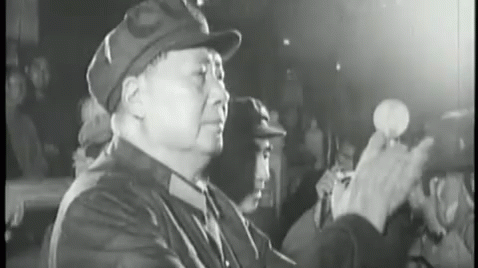
Looking back it feels ironic of the US military were wrapping their heads around Sun Tzu as way to get inside the Chinese communist mind (of Mao the military strategist especially). Unknown to them Mao had desperately tried everything to get hold of a copy of the Art of War from the Chinese Nationalists. Cambridge historian and doyenne of intelligence history, Christopher Andrew in his book The Secret World: A History of Intelligence, wrote that the theory that Sun Tzu’s The Art of War was critical to mastering contemporary warfare is propagated through the use of a tantalising anecdote: “During the civil war between Communists and the Kuomintang regime [Mao Zedong] sent aides into enemy territory to find a copy of it.” The ancient text, ostensibly, was of such vital importance that Mao was willing to risk men’s lives to obtain it, while Chiang Kai-shek vowed to protect it all costs. It’s a questionable anecdote at best as there are no historical evidence of it.

We can say that the notion that Sun Tzu’s slim treatise is considered both potent and slightly dangerous - providing the master key to unlocking victory in war through the ages - is a compelling myth that refuses to die. Mao most likely never ordered a clandestine operation to pilfer the text, nor did Chiang Kai-shek give any thought to shielding its contents from prying eyes. Both men certainly read it long before the start of their civil war, both most likely had ready access to it during the conflict, and neither man won or lost based on adherence or divergence from its teachings. But undoubtedly it set the hearts of Western military theorists aflutter in trying to unlock the secrets of Eastern military thought.
Sun Tzu and his ideas in a reincarnated form took hold of the wider public imagination in the 1980s. The 1980s was synonymous with Japan. With the perceived rise of Japan as a global economic power and the changes in post-Mao China, there was a Western (meaning American) search for more explanations. What was the secret of Asia’s rise? How were Japan and China ‘doing’ this?
In Western business circles it was for a time trendy to read it because of the perception that it was part of what made Japanese businesses so successful during the 70s and 80s. Management gurus and other corporate consultants certainly latched on to it and touted it as a way for Western businesses to re-orient their entire management and business philosophy. I don’t know if that ever actually was the case in Japan - my father who worked in both China and Japan in the corporate world at a very senior level said it wasn’t - but what is true is that in the West as the Japanese economy languished into the lost decade of the 90s so too did interest in Japanese business practices, and thus Sun Tzu.

The idea that The Art of War was a kind of how-to guide to ‘strategy’ was made especially popular by Hollywood in the 1980s. Oliver Stone’s iconic film ‘Wall Street’ seemed to typify the ‘greed is good’ New York capitalist scene of the 80s and 90s. Hollywood mirror imaged the rise of the corporate raiders and junk bond kings like Ivan Boesky and Michael Milken. Hollywood sent thousands of American businessmen off to read Sun Tzu to look for ‘leadership secrets’. This is part of a general Western fascination with ‘timeless Asian wisdom’, the American idea that ‘the mysterious East’ is possessed of secret knowledge. American and European businessmen were enamoured of the idea that “a battle is won or lost before it ever begins”, a saying that reinforced traditional American business attitudes about a winning mentality and a ‘can-do’ spirit being two keys to success.
Because Japan and China were trendy in the 1980s and 1990s it also influenced Western popular culture, not just fashion (think Kenzo) but also comic books (manga) and anime. In this Eastern friendly climate it led a number of popular fiction authors to release their ‘own’ versions of the work to capitalise on its newfound popularity. These versions were more about the pop culture of the era than Sun Tzu. Unfortunately, though popular, none of these versions took advantage of the work completed in Taiwan creating a definitive version of Sun Tzu's text by this time. These versions were based either on old English translations (the Calthorp and Giles versions) or incomplete Chinese sources. However, all of these versions remain popular today, despite their questionable sources and poor quality of translation.

In 1983, James Clavell updated The Art of War translation of Lionel Giles and published it in a very popular version. This started a very common practice in English translation: creating a ‘new’ version from other English translations instead of going back to the original source. Authors today continue to follow this practice, which only perpetuates and exaggerates the problems with early translations.
Thomas Cleary, another well-known author, did his own The Art of War translation with historical commentary in 1988. Again, his name recognition did much to increase awareness of Sun Tzu, even if his work did nothing to improve the general quality of the translation.
Looking back the whole Sun Tzu as a business model fetish in the 1980-90s was really pretty silly, rather like 80s shoulder pads. Of course, there are some similarities in leadership regardless of profession, but the basic goals and working environments of war and of business are so wildly different that applying Sun Tzu to business is superficial at best.
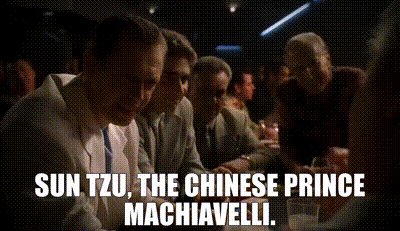
So to me the problem is not that Sun Tzu is ‘overrated’ per se, the problem is that every half baked author out there try to apply its principles to every problems that mankind have. The Art of War, as the title suggest, is not The Art of Managing your Business, the Art of Winning in Competition against your classmates, The Art of picking up Women, The Art of Living Life to the fullest. It is, and only is, The Art of War. It is ‘overrated’ only if you expect it to answer every problems in your life.
The Art of War is not the word of God. It is a war manual advocating common sense with pithy aphorisms - and a very good one.
It’s not that I think the Art of War is over-rated it’s that the more common problem is that many people vastly under-rate Sun Tzu. By misreading Sun Tzu thoughts and ideas, I believe many are in effect under-rating the problems which Sun Tzu is addressing, namely war, or the continuum of conflict resolution where divergence in interests of multiple parties extends to the possible use of lethal force on a massive scale. A lot of people trivialise this problem with idiocies like “what if someone threw a war and nobody came” (clue, they would win, then hunt down and enslave or kill everyone too foolish to contest the issue, as has happened countless times in human history) or “ban war” (said ban apparently enforced by throwing flowers at soldiers).
Understanding that war is a very real and intractable problem is necessary to fully appreciate the genius of Sun Tzu’s work, especially where it avoids fixed and easily definable tactics specific to the Warring States period and instead illustrates timeless concepts of out-thinking the enemy at every level of conflict. That the text is still mostly readily applicable or at least reasonably insightful after thousands of years is a testament to the inability of humans to push warfare beyond the fundamental aspects of conflicting interests and continuum of forcible resolution Sun Tzu addresses.

Still, the particular translation matters far less than having an appreciation that, in war, you have an active opponent who is trying to out-think and counter any moves you make, and having an appreciation of non-dualistic philosophical reasoning more characteristic of Chinese classics generally. The classic symbol of Yin-Yang (and a number of derivative versions) illustrates apparent dualism as being a part of a deeper structural unity which does not permit a fixed division into separate parts.
Hence the difficulty of applying the principles of the Art of War to artificial ideas of “winning/losing” (or war/peace, right/wrong, us/them) as categorical absolutes rather than negotiated possibilities in a continuum of desirability/costs. And it is very difficult, no one should sugar coat that. Humans sort and construct their perceptions of reality by appeal to such gross simplifications. Binary logic is an immensely powerful tool in many areas because it leverages the ability to simplify complexity and then build valid inferences based on fixed premises. But at some point you have to go beyond that to have a more fluid response to reality as it is. Which Sun Tzu does for the reality of war.
I would recommend anyone to read it. At the end of the day it’s a book of highly general aphorisms that effectively synopsise the essential insights that apply to all kinds of human conflicts. Turning an enemy's flank has the exact same effect in 2500 B.C. and in 2000 C.E. and it has the same effect in the boardroom, or public market as it does on the battlefield. Deception and intelligence are still used in exactly the same way, whether conquering foreign lands, or stealing market share from a competitor. It's a book about common sense; but common sense must seem profound to those who have none.
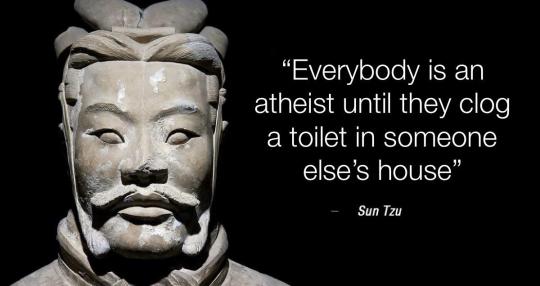
Overall, I think Sun Tzu’s Art of War is a worthy read and not overrated because in our society of over educated achievers, common sense is in as short of supply as it has ever been; if this book can provide the meaningful framework for educating very bright people in down to earth common sense, that can only be a good thing.
The value of the book then is to drive home the fact that, in human conflict, there really is Nothing New Under the Sun (Tzu).
Pardon the pun and thanks for your question.
#question#ask#sun tzu#military history#book#philosophy#china#culture#the art of war#war#military#warfare#strategy#society#literature#america#britain#japan
568 notes
·
View notes
Text
Abridged history of early 20th century Chinese womenswear (part 4.2: 1930s-hair, makeup & accessories)
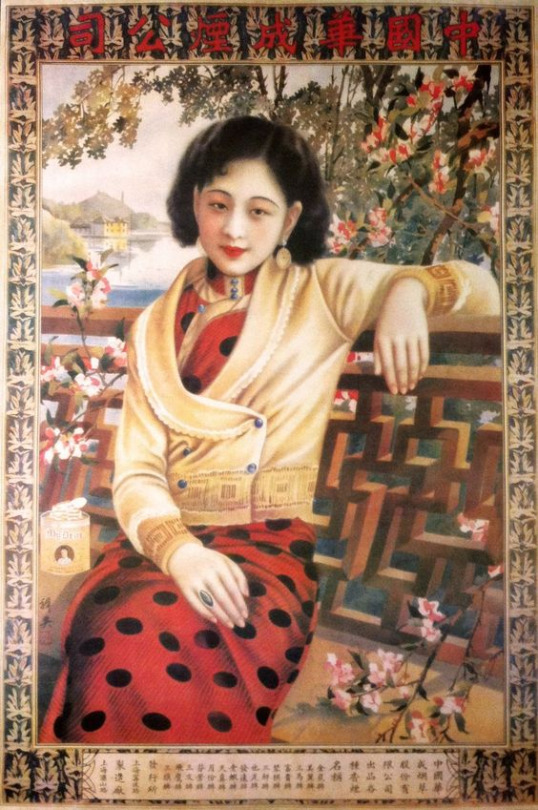
Source here
Previous posts in the series:
Part 1: 1890s
Part 2: 1900s & 1910s
Part 3.1: 1920s-silhouette
Part 3.2: 1920s-design details
Part 3.3: 1920s-accessories, hair & makeup
Part 4.1: 1930s-silhouette & design
A super late Happy Chinese New Year to all fellow humans who celebrate it!! I’m going to discuss hair, makeup and accessories of the 1930s today in no particular order.
Undergarments
At one point between 1932 and 1934 women in China decided to ditch the breast binders worn since the 1890s and wear brassieres instead. This allowed the natural shape of women’s breasts to show and the contrast between the bust and waist lent the dresses of the mid 30s a soft hourglass shape. The brassieres of the 1930s didn’t have stiffening, boning or foam and relied only on their structure for support, so the shape of the breasts looked very soft and rounded.
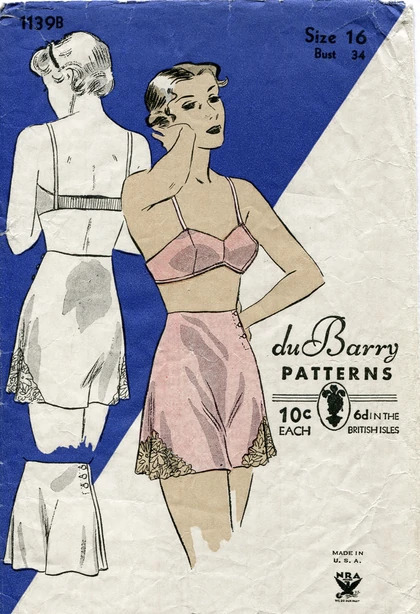
Source here
30s Du Barry lingerie sewing pattern for brassieres and drawers. This may not be very representative because brassieres made by different companies looked different, but they usually looked like modern bras with vertical darts and no wires or foam cups.
I must again redirect you to this article on breast binding in China, if you can’t read Chinese Google Translate works just fine. There’s one thing that I’d like to comment on though; the author named breast binding as the sole reason for the small bust measures of women at the time and argued that it caused health problems and hindered the growth of the chest. I think this is true to some extent, but other reasons for the generally small stature of women in this period (and indeed the centuries before) included malnourishment, bad healthcare and lack of exercise. Women weren’t educated about healthy diets and the importance of physical exercise before the 30s, not to mention the non-existent healthcare they received, so they were much shorter and skinnier, and suffered from more illnesses than the average modern woman. Before industrialization, food production was also often insufficient so a lot of women were malnourished.
As popular as brassieres were, some Chinese women chose to go braless. However, I have usually seen braless women in advertisements/pinup posters, so I suspect this would not be very socially acceptable on a daily basis.
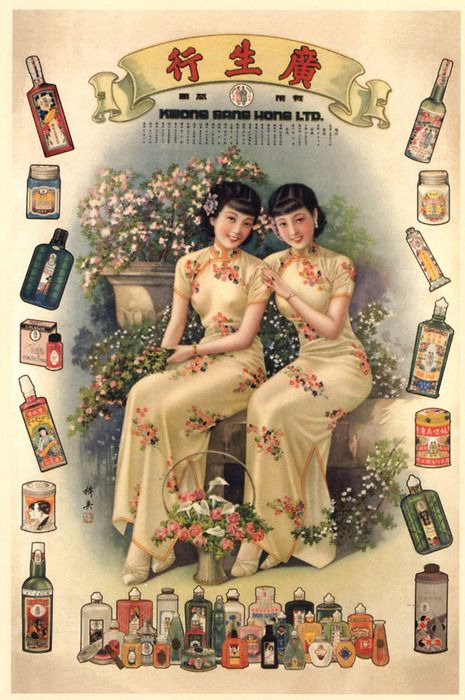
Source: lai yiching0926 on Pinterest. I get so many primary sources from this person y’all may as well check out their board on Chinese calendar painting it’s bomb. I also have a Pinterest board where I collect primary sources if anyone is interested, my Pinterest username is also audreydoeskaren.
However, being braless doesn’t mean wearing nothing underneath a cheongsam. Camisoles were worn on the upper body and drawers (which were becoming proto-panties) on the lower body; alternatively a slip could be worn. 30s drawers are really pretty in my opinion, they were high waisted and had an a-line shape, decorated with lace.
To my knowledge, Chinese women in this period did not yet wear girdles, corsets or any other kind of shapewear to take in the waist, at least I have never seen their edges peeking out from underneath the cheongsam. I guess this was also unnecessary as the cheongsam was a light one piece dress and didn’t require any support at the waist.
From my observation, stockings were kind of optional in this period. In the early 20s and before, Chinese women wore short stockings tied up by garters at knee level, but as the skirt hem rose to knee length in the late 20s they probably stopped doing that as the garters would show when they inevitably flash their knees. I assume longer, nude stockings would be worn, held up by a garterbelt or something, but a lot of images of this era showed women with no visible stockings. Teenagers and younger women could wear low knit socks like Western children, but these were not acceptable on grown up women unless they were doing sports. Tights were not yet a thing either.
On top of these undergarments, some women chose to wear ankle length petticoats or pants underneath the cheongsam. This was especially the case around 1934 when the side slits were mid thigh or higher and constantly showing your drawers was likely not the most respectable thing. These petticoats and pants were most commonly white and had decorative trim. Petticoats could have slits down both sides like the outer cheongsam or a flared hem. Pants were straight cut and wide legged. Later in the decade the slits became lower so petticoats and pants weren’t that necessary anymore but many women still chose to wear them, which is fine by me because I think it’s a cute look. Likewise there were many examples of women around 1934 wearing high slit cheongsam without petticoats or pants, especially if they were dancing, so this was likely a matter of personal preference (Western dances like tango, waltz, foxtrot, charleston and swing were introduced to China and popularized in the 20s and 30s. The Paramount dance hall in my native city of Shanghai is a monument to that).
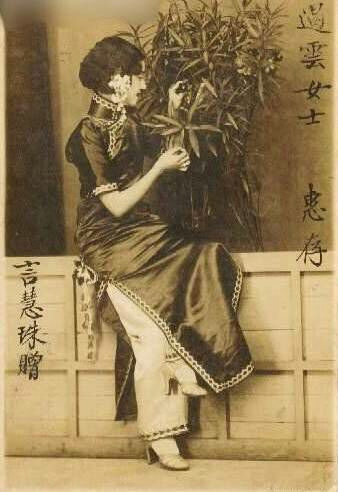
Source here
Mid 30s photograph, high slit cheongsam with pants.
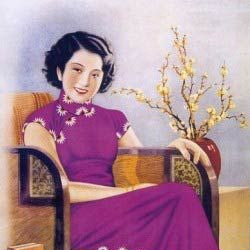
Source here
Later 30s fabric ad, low slit cheongsam with flared petticoat.
Outerwear
A noteworthy development in the mid 30s was that wearing actual, full blown Western fashion became popularized, but only as outerwear, sportswear or eveningwear; Western day dresses were not often seen on Chinese women. In regards to Western outerwear, a variety of them could be worn over cheongsam. In addition to the fur trim wrap coats popular in the late 20s, women wore capes, vests, suits, coats, knit cardigans and others. It was completely ok to mix and match Western accessories and jackets with cheongsam.
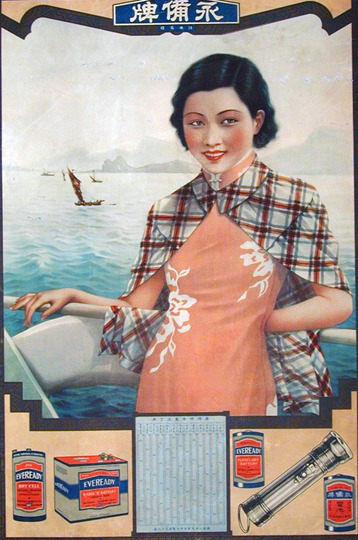
Source here
Short cape.
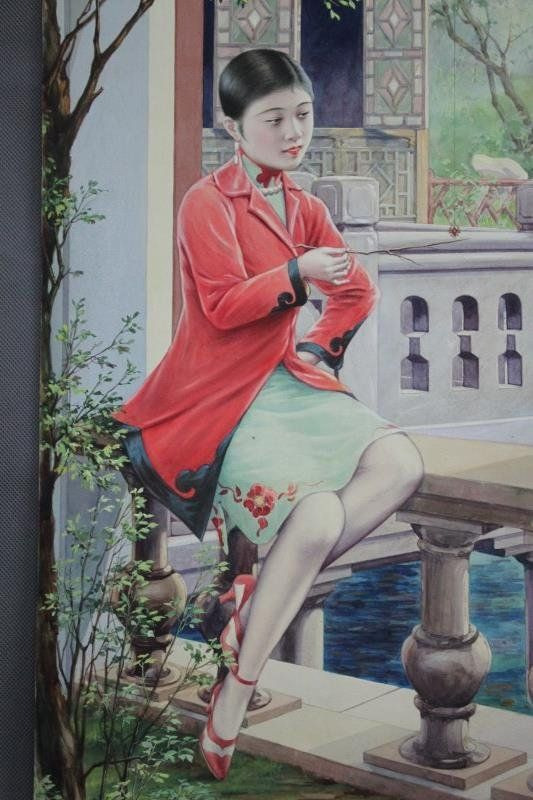
Source here
Early 30s women’s suit. I know I use this image a lot, it’s just really useful and beautiful :)
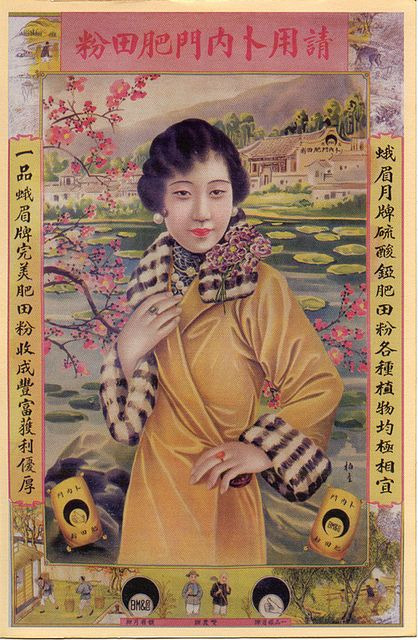
Source here
Early 30s fur trim wrap coat.
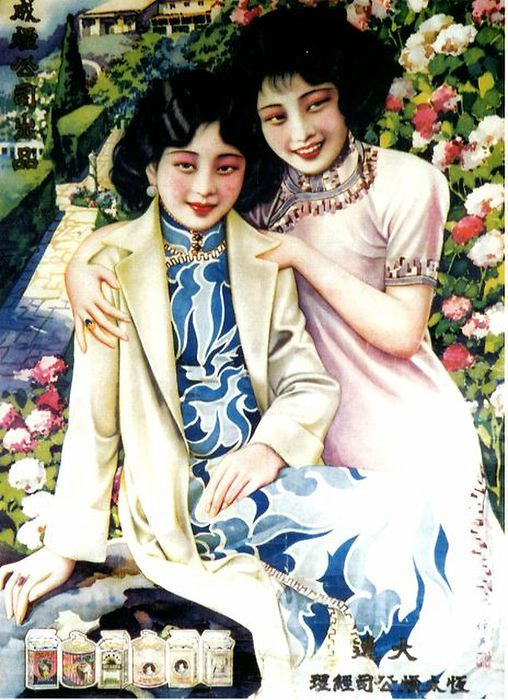
Source: Sayuu G on Pinterest, link
Long coat with lapels.

Source: Yuan Li on Pinterest, link
Cardigan and jacket. This kind of short sleeved, straight front, collarless jacket on the left was very popular in the mid 30s.
Another cute mid 30s accessory I’m very fond of is the gauntlet glove i.e. gloves that have a very wide trunk opening. I think they have an equestrian flair and look very badass.

Source: Yuan Li on Pinterest, link
1935 cover of The Young Companion. (Why are the useful images always so small? Woe is me)
Earrings were really common in the 30s, you could see them in almost all of the reference photos in this post.
Hairstyles
Since around 1930 the history of Chinese and Western women’s hairstyles had almost completely synchronized so if you know about vintage Western hairstyles you’re welcome to skip this part.
In the beginning of the 30s the most common hairstyle was a short bob with optional fingerwaves (called waterwaves in this period? I’m not great with terminology). Some bobs in the late 20s/early 30s could be so short that they look like buzz cuts. The defining feature of the fingerwave was the shimmery wave-like pattern in the hair created by pinching and combing the hair while it’s wet with setting products. Just a side note, the way fingerwaves are done in most Chinese period dramas nowadays, uh, leaves much to be desired. That’s because a lot of hairstylists just attach a wavy extension (which you can easily purchase from Taobao...) to the actresses’ forehead and call it a day, but that doesn’t really replicate the structure of the fingerwave and makes it look like the 铜钱头 in Kun Opera instead.
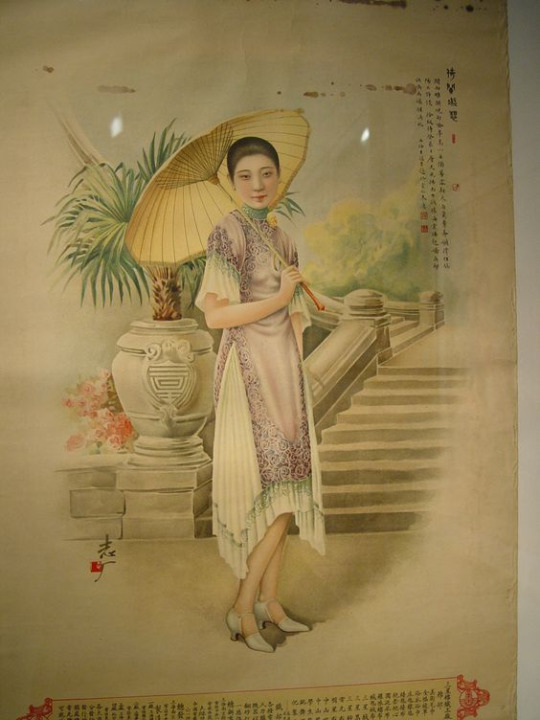
Source: Helen Xu on Pinterest.
Early 30s very short bob.

Source here
Early 30s fingerwave
Another very common hairstyle in the 30s was this mid length bob (either side part or middle part) with a lot of volume at the bottom. I am so puzzled as to how this is achieved, maybe with teasing or curling only at the bottom? That sounds odd.
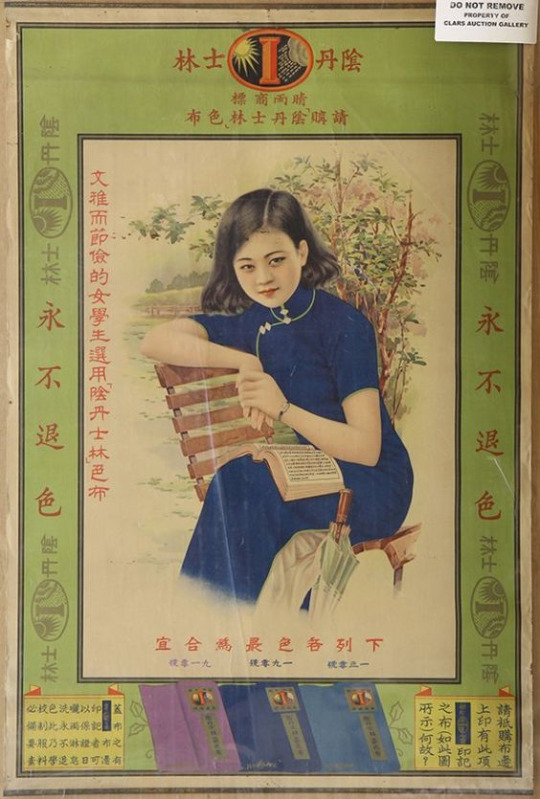
Source here
Mid 30s fabric ad.
This ad is forcing me to go on a tangent about fabric dyes. This label, Indanthren, sold fabrics dyed from a range of blue or blue-ish colored synthetic dyes made by the German company BASF (which was merged into IG Farben at this time). Because of the introduction of synthetic dyes to China, almost all colors under the sun could be produced or imported so there weren’t really any specific color limitations to the clothing of this period.
Back to hair. Contrary to popular opinion, fingerwaves were not in fashion throughout the 30s, let alone the entire republican era. As the 30s progressed, the fashionable hair length became longer, making it more difficult for fingerwaves to be performed; they were replaced by roller sets and pin curls which are more suitable for longer hair. In the mid 30s, brush out curls with a side part were extremely popular. At this point bangs kind of became a Chinese cultural heritage and a lot of women would wear brush out curls with bangs. There are literally a million patterns for setting brush out curls and every woman probably had her own tricks, so everybody’s hair looked a tad different but the overall idea was the same as Western brush out curls: women would set the hair in the night and sleep with the rollers/pin curls to let them dry, then in the morning they would brush them out until the desirable wavy shape is achieved. Many women also used curling irons to achieve the same hairstyles with heat, which was faster and didn’t require waiting overnight. With that said, the fingerwave didn’t just disappear either, it was often used in conjunction with brush out curls to sculpt specific hairstyles. I’m not a professional vintage hairstylist so I can’t always clock if a hairstyle is done with fingerwaving, brush out curls or both. From my own experience with brush out curls, they are usually more voluminous and have more fizzy ends and the waves don’t line up so perfectly like with fingerwaves because the process is more uncontrollable (or maybe I’m just clumsy).
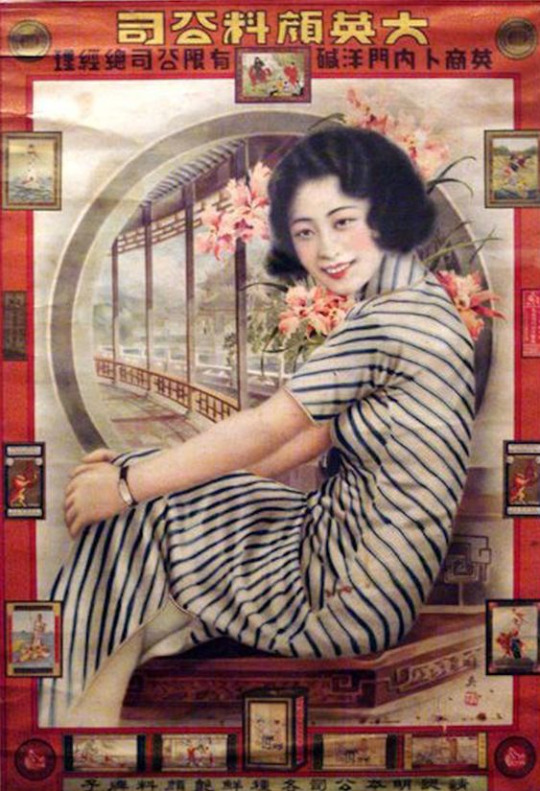
Source here
Typical mid 30s curls.
The fashionable hair length grew longer toward the end of the decade, with the finished curls reaching either the shoulder or the nape of the neck. Hairstyles became kind of rectangular in silhouette and flat at the crown. They were often pulled back at the sides to create a more rectangular shape for the face.

Source: lai yiching0926 on Pinterest.
Late 30s hairstyles.
Shoes
Again, full westernization here. 30s shoes had higher and thinner heels than 20s shoes, although they were still thicker and lower than modern stilettos. The heels were usually curved Louis heels. 30s shoes often had a single strap across the foot and a wrapped design at the toe. Spectator shoes and Oxfords that covered the whole foot were also worn. Likewise, strapless pumps were fashionable too, sometimes with an open toe design, especially toward the end of the decade.
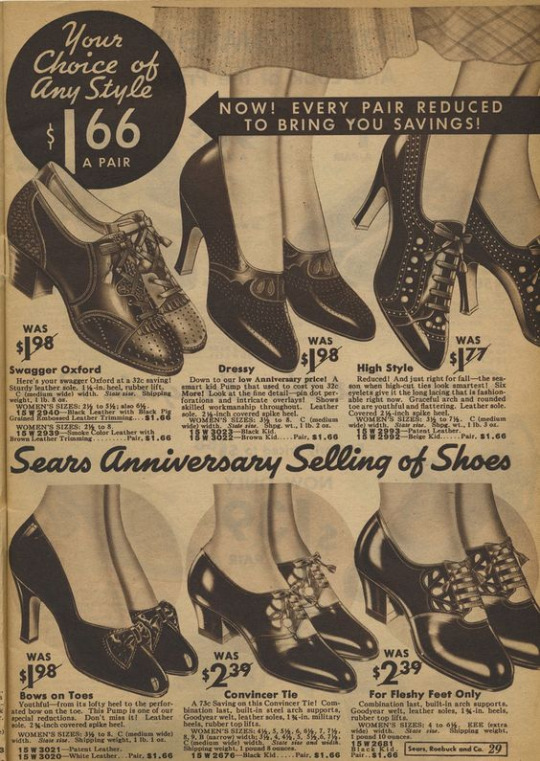
Source: genibee on Flickr, link
1935 Sears catalogue. Maybe not very representative since shoes made by different companies looked different, just showing what was possible.
Interestingly, I have never seen an image of a 30s Chinese woman wearing boots or booties outside of an equestrian context. I guess boots either weren’t feminine enough or were too inconvenient under the long cheongsam.
Sportswear
A very interesting development in the 30s was the popularization of sportswear as a result of women doing sports. Wealthy or aristocratic Chinese women have been riding and hunting in an attempt to emulate European lifestyle since decades, but these sports remained elite and untouchable for common women; in the 30s however, more accessible sports like swimming, volleyball and tennis became in vogue. The popularity of swimming was in large part due to the influence of female swimming champion 杨秀琼 Yang Xiuqiong (her name is spelled differently in Cantonese because she was from Hong Kong), who was seen as a national hero for winning a ton of medals in international swimming competitions and breaking records. China began trying to participate in Olympic games around this period and there were also many other women athletes competing in different sports, so sportswear became a necessity.
The design of swimwear in this period followed closely the design of Western bathing suits, usually a tight, short, one piece bodysuit.
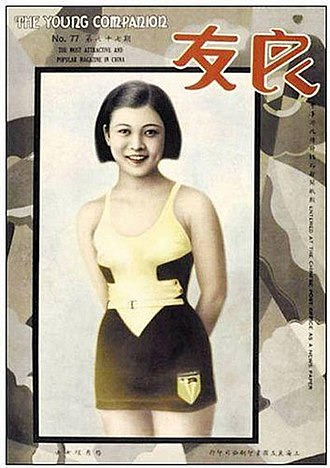
Source here
1933 cover of The Young Companion featuring Yang in a swimsuit. There was a stigma around female swimmers at this time though, mostly because of the revealing clothing they had to wear to allow freedom of movement. Many press reports called Yang a “mermaid” because of her physical beauty, trying to reduce her to a sex icon instead of the glorious athlete she actually was. All of the whack rumors about her being a concubine of some rich dude was also really disgusting and distracting from her achievements.
I’ve also seen multiple times this two piece design with shorts and a modernized 肚兜 dudou (a Qing Dynasty undergarment with a function akin to that of a corset cover).
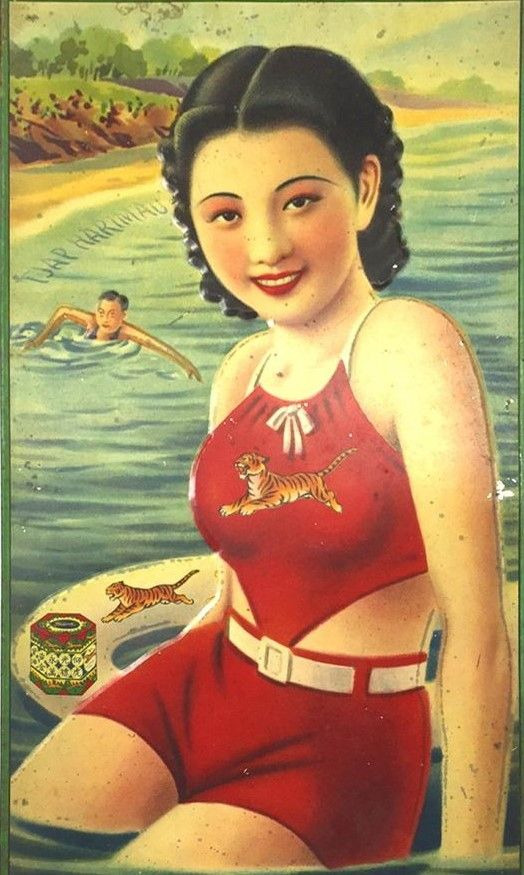
Source: EMKAY on Pinterest
30s pinup girl in two piece swimsuit.
For land sports, women usually wore a short sleeved open collar shirt with shorts, short knit socks and flat pumps.

Source: Jason Tse on Pinterest
1933 cover of The Young Companion featuring a tennis player.
Makeup
The makeup look of the early 30s was almost identical to the late 20s look, with the thin, elongated eyebrows, large oval shaped blush and delicate red/mauve lips. This continued all the way until around 1938-39.
Toward the end of the decade, the eyebrows started to return to a normal thickness and became kind of arched instead of flat. Eyeshadows became lighter or non-existent. Women used cake mascara to darken their eyelashes, which were separated and evenly spread out. The location of the blush moved slightly downward. Red lipstick was still the most popular but the lips were plumper than in the early 30s. Overall very subtle and small changes to makeup. There were a bunch of Western and Japanese makeup companies trading in China at this point, I couldn’t name any specific ones beside Nivea which was quite popular for affordable skincare products like cream and sunscreen. I assume that actresses and pinup girls would also use Max Factor, but I’m not sure how widely used his products were among the general population. The Hong Kong brand 广生行 Kwong Sang Hong (whose Shanghai branch was called 双妹 “Twin Sisters” and whose advertisements we have seen too many times in this series) was also really popular.
I know I promised to talk about makeup more in this post but unfortunately there really isn’t much to talk about :( So see you next time when I dig into the 1940s!
#1930s#art deco#vintage hair#vintage accessories#vintage shoes#vintage lingerie#chinese history#chinese fashion#historic fashion#vintage#vintage makeup#vintage sportswear#cheongsam#qipao#abridged history of early 20th century chinese womenswear
557 notes
·
View notes
Text
scandalous star: gary cooper -an analysis
“I don’t like to see exaggerated airs and exploding egos in people who are already established. No player ever rises to prominence solely on talent. They’re molded by forces other than themselves. They should remember this – and at least twice a week drop to their knees and thank Providence for elevating them from cow ranches, dime store ribbon counters and bookkeeping desks. ” - Gary Cooper
He didn’t say much, but when he did, it carried a lot of weight. He was the archetypal hero of the Old West; the quintessential masculine ideal of the stoic and “strong silent type” that most Taurus men are. But for famously laconic Gary Cooper, his good looks and earnest, haunted eyes for decades made him the quintessential lonely American of motion pictures.He was a more equanimous, human protagonist versus boisterous, bigger-than-life Hollywood supermen. He was renowned for his quiet, understated acting style and his individualistic, emotionally restrained, but at times intense screen persona, which was particularly well suited to the many Westerns he made. He was a man’s man...as well as a ladies’ man. Cooper became a hero to many, even as he developed a reputation as one of the most notorious philanderers in Hollywood. Privately a debonair ladykiller with a taste for high society, he crafted an image as just the opposite from his prototype cowboy image he materfully portrayed on the silver screen. He was insatiable, before and during his marriage. How did he reconcile his moral righteousness onscreen (Taurus sun) with his philandering offscreen (Sagittarius moon)? That was the work of the fixers, gossip magazines, and the studio system at large, which ensured that Cooper was never caught, never denounced, and held up as a paragon of American values.
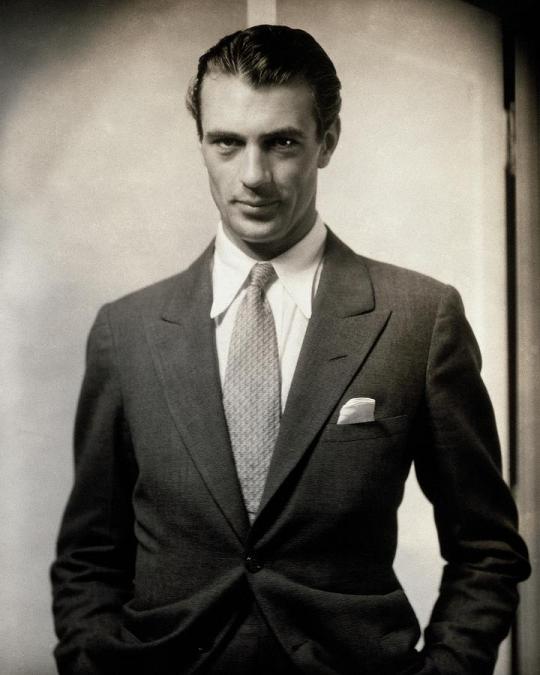
Gary Cooper, according to astrotheme, was a Taurus sun and Sagittarius moon. He was born Frank James Cooper in Helena, Montana, the second son of an English farmer from Bedfordshire, who later became an American lawyer and judge, Charles Henry Cooper (1865-1946), and Kent-born Alice (née Brazier) Cooper (1873-1967). As a child, he met a freed slave woman named Mary Fields, otherwise known as Stagecoach Mary, and so awed by her was she that he later wrote an account of his memories of her in Ebony magazine. His mother hoped for their two sons to receive a better education than that available in Montana and arranged for the boys to attend Dunstable Grammar School in Bedfordshire, England between 1910 and 1913. Upon the outbreak of World War I, Cooper’s mother brought her sons home and enrolled them in a Bozeman, Montana, high school. Upon graduation, he eventually matriculated at Grinnell College in Grinnell, IA, where he attempted to nurture a passion for drawing - until a serious car accident ended his college days in the summer of 1920. He would recover from his severely injured hip through an odd but painful therapy, horseback riding.
When his father retired from the bench and moved his mother to Los Angeles, Cooper gave up agriculture classes to try his hand as a Hollywood extra. Cooper played an extra in a handful of silent films before arriving on the set of The Winning of Barbara Worth in 1926. The actor cast as the second male lead didn’t show, and someone shoved Cooper into the part. He appeared with Clara Bow (who soon became one of his conquests) in her star-making film It, but it was his appearance in another Bow vehicle Wings, released later that same year, truly launched his career. He plays a World War I flying cadet, and although his screentime was still relatively short, there was one scene — an extended close-up shot, the light streaming in from outside — in which he looked gorgeous. In 1929, he filmed The Wolf Song with Lupe Vélez. He soon had an affair with Velez, who purportedly claimed that Cooper “has the biggest organ in Hollywood but not the ass to push it in well.” For more on their relationship, read my star analysis on Lupe.
Cooper filmed The Virginian — his first real “talkie,” and the film was a major hit and cemented the foundation of Cooper’s image. His ability to project elements of his own personality onto the characters he portrayed, to appear natural and authentic in his roles, and to underplay and deliver restrained performances calibrated for the camera and the screen helped make him a cinematic success, often lauded by those he worked with. However, his good looks and charisma made him a success with women, whether he worked with them or not. Over the next few years, Cooper was paired with the most gorgeous and promising female stars in Hollywood —with Carole Lombard in I Take This Woman (whom he slept with), Claudette Colbert in His Woman (whom he allegedly slept with), Marlene Dietrich in Morocco and Desire (who he famously slept with more than once), and Joan Blondell in Make Me a Star (who he allegedly slept with). In 1932, Cooper and his Paramount “rival,” Cary Grant, were cast against Tallulah Bankhead in Devil and the Deep (1932). Like Lupe Velez, Bankhead was a loose cannon, with most famous quote being:
“The only reason I went to Hollywood was to fuck that divine Gary Cooper.”
Amidst all his public and private action, Cooper began courting Veronica “Rocky” Balfe, a starlet who went by the stage name of Sandra Shaw. She was also best known as the blonde dropped by King Kong. The two were wed in late 1933. Balfe retired from the screen to become a wife and mother, with her giving birth to their only child, Maria, in 1937. Cooper portrayed a new type of hero—a champion of the common man—in films like Mr. Deeds Goes To Washington and 1941′s Sergeant York (which won him his first of two Best Actor Oscars). Cooper met Ernest Hemingway at Sun Valley in October 1940 and they were friends for the rest of his life. He co-starred with Ingrid Bergman (with whom he had a year-long affair with) in a the film adaptation of Hemingway’s For Whom the Bell Tolls. He kept starring in more films and bedding his female co-stars until he got more than he bargained for when he made The Fountainhead. Naturally, the 47-year-old Cooper had an affair with his co-star, the 21-year-old Patricia Neal. However, this time things got crazy: Neal wound up pregnant with Cooper’s child. He insisted she have an abortion. When Cooper’s long-suffering wife found out about the relationship, she sent a telegram demanding he end it. This didn’t work; he also confessed that he was in love with Neal, and continued to see her. Cooper and his wife legally separated in May of 1951. Cooper’s daughter Maria, by then in her early teens, famously spat on Neal in public. Neal later claimed that Cooper hit her after she went on a date with Kirk Douglas. Neal ended their relationship in late December 1951. Amid all this drama, Cooper starred in what is now regarded as his defining role: the beleaguered sheriff in High Noon, which won him his second Best Actor Oscar. In later life, he became involved in a relationship with the costume designer Irene, and was, according to Irene, "the only man she ever loved".
Maybe all his previous actions had an affect on him because Cooper converted to Catholicism in 1958, and reconciled with his wife and daughter. Also, he began starring in films that centered around searching for redemption, such as Friendly Persuasion (1956) and Man of the West (1958). In 1960, Cooper fell ill with prostate cancer, which quickly spread to his colon, lungs, and bones; he died of it shortly after his 60th birthday in 1961. A year after his death, Irene committed suicide by jumping from the 11th floor of the Knickerbocker Hotel, after telling Doris Day of her grief over Cooper's death. Regardless of his philandering, regardless of the arduous work of his studio’s publicity departments, there was something plaintive, almost childlike, maybe even innocent about Cooper, so he can easily be forgiven his sins. He acted out what mattered to millions of people, and that act made him a star beyond measure.
Next, I’ll focus on his former paramour Lupe Velez’s arch nemesis. A woman who happened to be wife of MGM art director Cedric Gibbons (Gary Cooper’s wife Rocky’s uncle). She was another pioneer of Mexican cinema who was arguably the first Latina to successfully crossover to Anglo audiences: Leo Dolores del Río.
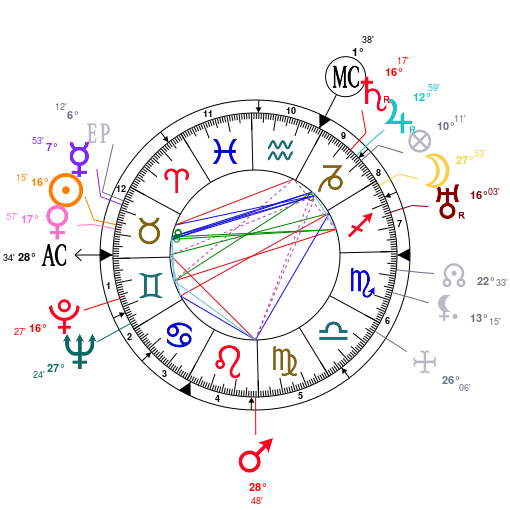
Stats
birthdate: May 7, 1901
major planets:
Sun: Taurus
Moon: Sagittarius
Rising: Taurus
Mercury: Taurus
Venus: Taurus
Mars: Leo
Midheaven: Aquarius
Jupiter: Capricorn
Saturn: Capricorn
Uranus: Sagittarius
Neptune: Gemini
Pluto: Gemini
Overall personality snapshot: He was torn between an instinct to roam free and a determination to find security and make a solid, lasting contribution to the world. As he repeatedly changed horses in search of both ultimate certainties and high-spirited adventure at the same time, he could find himself deeply divided and uncertain. He sought to earth the fire from heaven and put it to work, but he found all too often that it would not let him rest. In his search for stability and security, he became a farmer and was immediately confronted with the changing seasons. He embraced the solid certainties of geology and are hit by an earthquake. He liked to feel the solid earth move. He sought certitude and permanence, yet his endless inquiries constantly confounded yesterday’s certainties. When he got his own uncertainties together (by accepting he wanted the best of both the changing and the unchanging worlds), he could have been a brilliant teacher, conversationalist, counselor, entertainer, wit, creative artist or entrepreneur – in fact he could have been anything he wanted. Once focused, he could be a human dynamo, and wonderfully humorous, witty and entertaining with it. As he discovered, his quest for solid material certainties did not make a happy bedfellow for his yearning for excitement and larger religious and spiritual understanding. In one way or another, be it through philosophy and the spiritual quest or through writing, music or art, he needed to put together and formulate a total vision of the universe which is based on unassailable facts yet satisfying to his idealism.
Constantly seeking, he was a natural agnostic, applying the criteria of science to counter woolly speculations, yet at the same time highly skeptical of the limited and statistical pronouncements of unthinking science. The danger, if he did not marry these elements within him, is that he would swing from one to the other and undermine the virtues of both. A restless changing of jobs, careers, partners, visions or aspirations left him drunk with his own spinning. When he deliberately tried to remain sober and commonsensical, it seemed to make matters worse for there was something of the gambler in him. This all-or-nothing streak can temporarily overcome your natural caution and enable you to burn your bridges (though you will usually ensure there is something tucked away for a rainy day). He felt an impulsive need to do things on a grand scale, to live with commitment, to feast on the world, and to understand what it was to be alive in all possible ways. He seemed to be called both to explore the reaches of the imagination and to build secure foundations. He brought far-reaching visions into manifestation, and these visions injected his conservative desire for stability and security with flair and colour. His vision of tomorrow and the larger world gave spice to any project he undertook. He saw endless possibilities and wanted to make them real. In this he could be the natural entrepreneur who saw economic opportunities at every turn, an inspiring counselor and teacher, and a stimulating companion whatever he did.
His well-shaped body displayed a warm attractiveness and ripeness. In his later years, he may have needed to watch the tendency to gain weight too easily. His strong broad shoulders supported a very large neck size. His most outstanding feature was his eyes and his gentle smile and voice. He was big-boned. He enjoyed dressing well, preferring soft colours. He was practical, steady and patient, but he could be inflexible in his views. One thing he did have was plenty of common sense and good powers of concentration, although he tended to think that purely abstract thought was a waste of time. His thought processes weren’t as quick as others, but his decisions were made with a lot of thought behind them. He also had the welcome ability to bring people together. He needed to be able to show his originality and independence in any job for complete satisfaction. His work should also satisfy his scientific bent and humanitarian leanings. He needed scope for his inventiveness, because he was able to bring a fresh view to any job. Ideally, his work should permit him to express the idealistic side to him character and allow him to help as many people as possible. He could be extremely efficient in the way that he tried to get maximum result out of minimum effort. He didn’t like extravagance and waste. He was a thoughtful and resourceful person, who was well-informed on many subjects. Success came gradually and as a result of hard work. Success and growth, for him, were expressed by material and financial achievements, bringing status and prestige.Worldly success was well within his reach, because he possessed all the necessary talents to gain power, influence and status. He was practical, determined and patient. When there were hitches in his plans, he simply worked around them. He knew where he was heading to, and had already figured out the best way to use his talents to reach his goals.
Although he could be fairly pessimistic about life in general, it didn’t put him off aiming for the top. He could be very single-minded about reaching his goals, and was prepared to put his career interests above his personal happiness. He was extremely aware of his own worth. He was prepared to work beyond the call of duty. His strong sense of ambition gave him a certain rigidity, arrogance and selfishness in the eyes of others. He belonged to a generation with fiery enthusiasm for new and innovative ideas and concepts. Rejecting the past and its mistakes, he sought new ideals and people to believe in. As a member of this generation, he felt restless and adventurous, and was attracted towards foreign people, places and cultures. As a member of the Gemini Neptune generation, his restless mind pushed him to explore new intellectual fields. He loved communication and the occult and was likely also fascinated by metaphysical phenomena and astrology. As a Gemini Plutonian, he was mentally restless and willing to examine and change old doctrines, ideas and ways of thinking. As a member of this generation, he showed an enormous amount of mental vitality, originality and perception. Traditional customs and taboos were examined and rejected for newer and more original ways of doing things. As opportunities with education expanded, he questioned more and learned more. As a member of this generation, having more than one occupation at a time would not have been unusual to him.
Love/sex life: His sexuality was a wonderful combination of sensuality and basic laziness. He let himself be carried along by his pleasure-seeking instincts, greeting every new experience with fresh eagerness and then slowly draining from that encounter all the joy it has to offer. This passive, easy-going approach to sex not only made for good technique, it also conceals the egocentric strength and stubbornness that was at the core of his erotic nature. People don’t realize that beneath all that luxurious hedonism he was always the person in control. He was a conservative lover for whom appearances were always important. There may have been occasions when his sensuality lured him into indiscretions but he was quick to cover his tracks and hide the evidence. The quiet practicality of his sexual nature served as a handy antidote for his Martian braggadocio. He knew that he was the best there is but he was willing to sit back and let the world find out the good news on its own. In his youth Cooper was endorsed by several female “experts” of the time (such as Clara Bow, Marlene Dietrich and Tallulah Bankhead) as Hollywood’s sexiest man. His soft spoken and manly sex appeal projected just as well on the screen. After marrying at age 32, Cooper’s sex life became somewhat more sedate though he never lost his ability to attract women.
minor asteroids and points:
North Node: Scorpio
Lilith: Scorpio
Vertex: Libra
Fortune: Capricorn
East Point: Taurus
His North Node in Scorpio dictated that he needed to be careful not to let the more emotional side of his personality overwhelm him. Instead, he should have set out to consciously develop his more practical abilities. His Lilith in Scorpio ensured that he was dangerously attracted to those women who seduced and conquered on a daily basis; who liked life intense and was judged for her sexuality and general vibe and learned early on how to deflect moral judgments. His type of women may have been tried in the court of public opinion but no way were they going to show up for the sentencing. His Vertex in Libra, 6th house dictated that he llonged for a union of souls that was based on a model of pure peace and justice. Images come to mind of a mythical life on Venus, the planet of love, where there is never a discordant beat between lovers, but rather, continual harmony even if played in the minor chords. Physical lust was certainly a necessary aspect of two beings eternally intertwined, but the platonic component far outweighed it in importance for him. He had an attitude of duty, obligation and sacrifice when it came to heartfelt interactions. The negative side was the tendency to become hypochondriacal or martyristic to get the love he so desperately wanted. There was a need for others to appreciate the sincerity of his intentions, to the daily tasks he executed in a conscientious and caring way and for others to know that his actions, no matter how routine they may seem, were based on devoted love. His Part of Fortune in Capricorn and Part of Spirit in Cancer dictated that his destiny lay in creating practical and long-lasting achievements. Success came through hard work, determination, responsibility and perseverance. Fulfillment came from observing his progress through life and seeing it take a form and structure that will outlive him. His soul’s purpose guided him towards building security in his life, both emotional and material. He felt spiritual connections and the spark of the divine within his home and family. East Point in Taurus dictated that he was more likely to identify with the need for pleasure (including the potential of liking himself) and comfort.
elemental dominance:
earth
fire
He was a practical, reliable man and could provide structure and protection. He was oriented toward practical experience and thought in terms of doing rather than thinking, feeling, or imagining. Could be materialistic, unimaginative, and resistant to change. But at his best, he provided the practical resources, analysis, and leadership to make dreams come true. He was dynamic and passionate, with strong leadership ability. He generated enormous warmth and vibrancy. He was exciting to be around, because he was genuinely enthusiastic and usually friendly. However, he could either be harnessed into helpful energy or flame up and cause destruction. Ultimately, he chose the latter. Confident and opinionated, he was fond of declarative statements such as “I will do this” or “It’s this way.” When out of control—usually because he was bored, or hadn’t been acknowledged—he was bossy, demanding, and even tyrannical. But at his best, his confidence and vision inspired others to conquer new territory in the world, in society, and in themselves.
modality dominance:
fixed
He liked the challenge of managing existing routines with ever more efficiency, rather than starting new enterprises or finding new ways of doing things. He likely had trouble delegating duties and had a very hard time seeing other points of view; he tried to implement the human need to create stability and order in the wake of change.
house dominants:
12th
9th
8th
He had great interest in the unconscious, and indulged in a lot of hidden and secret affairs. His life was defined by seclusion and escapism. He had a certain mysticism and hidden sensitivity, as well as an intense need for privacy. Traveling, whether physically across the globe, on a mental plane or expanding through study was a major theme in his life. He was not only concerned with learning facts, but also wanted to understand the connections formed between them and the philosophies and concepts they stood for. His conscience, as well as foreign travel, people and places was also of paramount importance in his life. He loved the totality of the human experience and embraced the whole cycle of human life, including birth, sex and death. His darker side, and the complexes and emotions that he preferred to keep hidden, even from himself was a theme throughout his life. His ability to undergo deep personal transformations and spiritual regeneration was also highlighted.
planet dominants:
Venus
Saturn
Sun
He was romantic, attractive and valued beauty, had an artistic instinct, and was sociable. He had an easy ability to create close personal relationships, for better or worse, and to form business partnerships. He believed in the fact that lessons in life were sometimes harsh, that structure and foundation was a great issue in his life, and he had to be taught through through experience what he needed in order to grow. He paid attention to limitations he had and had to learn the rules of the game in this physical reality. He tended to have a practical, prudent outlook. He also likely held rigid beliefs. He had vitality and creativity, as well as a strong ego and was authoritarian and powerful. He likely had strong leadership qualities, he definitely knew who he was, and he had tremendous will. He met challenges and believed in expanding his life.
sign dominants:
Taurus
Sagittarius
Capricorn
His stubbornness and determination kept his around for the long haul on any project or endeavour. He was incredibly patient, singular in his pursuit of goals, and determined to attain what he wanted. Although he lacked versatility, he compensated for it by enduring whatever he had to in order to get what he wanted. He enjoyed being surrounded by nice things. He liked fine art and music, and may have had considerable musical ability. He also had a talent for working with his hands—gardening, woodworking, and sculpting. He sought the truth, expressed it as he saw it—and didn’t care if anyone else agreed with him. He saw the large picture of any issue and couldn’t be bothered with the mundane details. He was always outspoken and likely couldn’t understand why other people weren’t as candid. After all, what was there to hide? He loved his freedom and chafed at any restrictions. He was a serious-minded person who often seemed aloof and tightly in control of his emotions and her personal domain. Even as a youngster, there was a mature air about him, as if he was born with a profound core that few outsiders ever see. He was easily impressed by outward signs of success, but was interested less in money than in the power that money represents. He was a true worker—industrious, efficient, and disciplined. His innate common sense gave her the ability to plan ahead and to work out practical ways of approaching goals. More often than not, he succeeded at whatever he set out to do. He possessed a quiet dignity that was unmistakable.
Read more about him under the cut.
Actor Gary Cooper was born on May 7, 1901, in Helena, Montana. Spanning from the silent film era to the early 1960s, Academy Award-winning actor Gary Cooper built much of his career by playing strong, manly, distinctly American roles. The son of English parents who had settled in Montana, he was educated in England for a time. He also studied at Grinnell College in Iowa before heading to Los Angeles to work as an illustrator. When he had a hard time finding a job, Cooper worked as a film extra and landed some small parts. After his appearance in
The Winning of Barbara Worth
(1926), a western, Cooper's career began to take off. He starred opposite silent movie star Clara Bow in Children of Divorce (1927). Cooper also earned praise as the ranch foreman in
The Virginian
(1929), one of his early films with sound. Throughout the 1930s, he turned in a number of strong performances in such films as A Farewell to Arms (1934) with Helen Hayes and Mr. Deeds Goes to Town (1936) directed by Frank Capra. Cooper received an Academy Award nomination for his work on the film. Cooper continued to excel on the big screen, tackling several real-life dramas. In Sergeant York (1941), the played a World War I hero and sharpshooter, which was based on the life story of Alvin York. Cooper earned a Best Actor Academy Award for his portrayal of York.
The next year, Cooper played one of baseball's greats, Lou Gehrig, in The Pride of the Yankees (1942). Again, he scored another Best Actor Academy Award nomination. Appearing in a film adaptation of Ernest Hemingway's For Whom the Bell Tolls, Cooper starred opposite Ingrid Bergman in a drama set during the Spanish Civil War. This role garnered him a third Academy Award nomination. In 1952, Cooper took on what is known considered his signature role as Will Kane in High Noon. He appeared as a lawman who must face a deadly foe without any help from his own townspeople. The film won four Academy Awards, including a Best Actor win for Cooper. In addition to his excellent on-screen performances, Cooper became known for his alleged romances with several of his leading ladies, including Clara Bow and Patricia Neal. The affair with Neal, his co-star in 1949's The Fountainhead, reportedly occurred during his marriage to socialite Veronica Balfe with whom he had a daughter. Their marriage seemed to survive the scandal. By the late 1950s, Cooper's health was in decline. He made a few more films, such as Man of the West (1958), before dying of cancer on May 13, 1961. (x)
18 notes
·
View notes
Text
12 Christmas Films of a Century Past

For some reason, I thought it would be a good idea to watch somewhere around 50 Christmas and Christmas-adjacent silent films from before 1920 to put together a playlist for you all. So, I hope you enjoy!
I chose these twelve as a representative selection. My general criteria were:
Christmas should be central to the story
The plot should be novel to a modern viewer or something a modern viewer would be surprised to see so early on film
The list on the whole should have a variety of settings and narrative structures
Here’s a direct link to the YouTube playlist if you want to watch them all in one go. (They are all shorter than feature length!)
Two quick presentation notes: 1. Some of the videos have music and some don’t, so you may want to check your volume level. 2. The intertitles for some of these films are not in English, so be sure you have captions turned on for English translations.
See the whole list BELOW THE JUMP!
1. Santa Claus (1898) (UK)
Directed by George Albert Smith
Short and sweet, this film sees children put to bed by their nanny on Christmas Eve and Santa Claus coming down the chimbley to fill their dutifully hung stockings. Director G.A. Smith used his own patented technique of double exposure to show Santa’s arrival without cutting away from the children’s room. Santa Claus might not pack the punch of a Méliès trick film, but it’s a fun novelty and is purportedly the first appearance of Santa Claus on film.
2. The Little Match Seller (1902) (UK)
Directed by James Williamson
This one’s quick but effective adaptation of the Hans Christian Anderson tragedy featuring impressively well-coordinated superimpositions.
3. The Christmas Angel (1904) (FR)
Directed by George Méliès for Star Film Company
The Christmas Angel follows an impoverished girl driven into the city to beg on a snowy winter night. First she’s chased away from a church by more seasoned beggars; then she’s thrown out of a poultry seller and harassed by police. On the verge of falling asleep in the snow, a rag-and-bone man rouses her and offers her help. Later, the girl passes out beside a road but is luckily spotted by a wealthy couple on a car ride. When they learn of her plight, they bring her home along with food and gifts.
Though not as fantastical as some of Méliès’ more famous works, The Christmas Angel is still highly stylized (and stylish) and features special effects that photograph beautifully. It’s also worth noting that the version of the film included here is the American cut. The original French cut, titled Détresse et Charité (Distress and Charity), did not include the sequence with the wealthy couple and instead ends with the girl dying in the snow.
4. The Night Before Christmas (1905) (US)
Directed by Edwin S. Porter for Edison Manufacturing Company
This is the first time the poem “Twas the Night Before Christmas” was put on film. Loosely following the poem, we see Santa Claus prepare for his yearly trek while a middle-class family prepares for his visit. When Santa heads out, we are treated to an extended panning sequence with a fully painted backdrop for a mini Santa and his reindeer to glide across. When Santa arrives at the family home, he chaotically dumps presents and decorations around their living room and makes a large, decorated tree appear out of thin air. (Across many of the movies I watched to put this post together, this seems to be a favored scenario for the jolly fat man around this time–and it’s delightful.) The family then wakes to find their gifts and the film closes with Santa directly wishing us a Merry Christmas.
5. A Little Girl Who Did Not Believe in Santa Claus (1907) (US)
Directed by J. Searle Dawley and Edwin S. Porter for Edison Manufacturing Company
Even at the risk of this list being too Edison heavy, I couldn’t leave this great short out. While walking with his mother, a rich little boy encounters a poor little girl alone in the cold. They take her home to play and warm up. When the boy learns that the girl doesn’t believe in Santa because apparently Santa doesn’t visit poor children, he hatches a scheme. On Christmas Eve, the boy has a stake out near the fireplace and takes Santa hostage, tying him up and holding him at gunpoint. The boy then forces Santa to visit the girl–going so far as shimmying down the chimney himself to let Santa in the front door. When the girl wakes up to a beautifully decorated tree, new toys, and a full stocking, she can finally believe in Santa Claus. While I’m generally not so into stories about supposedly benevolent rich people, I do love the implications this story has on how Santa Claus works and I also find the means with which the boy gets his way hilarious.
6. Il Natale di Cretinetti / Foolshead’s Christmas (1909) (IT)
and Come fu che l’ingordigia rovino il Natale di Cretinetti / How Greediness Spoilt Foolshead’s Christmas (1910)
and Il Natale di Cretinetti (1911)
Directed by Andre Deed for Itala Film
This entry is a three-for, which I hope you’ll excuse, but I couldn’t decide which Cretinetti Christmas to share! Cretinetti, the comedic persona of filmmaker Andre Deed, is an absolute agent of chaos.
In the 1909 film, Cretinetti attempts to bring a tree home for a Christmas party. The destruction escalates wildly, culminating in an entire building falling to pieces.
If you can believe it, the stakes are even higher in the 1910 film, when Cretinetti can’t resist sneaking out of bed on Christmas Eve to snack on the candy decorating the tree. When Santa sees what Cretinetti has done, he chides him and takes him back to his workshop, which is apparently in heaven. Destruction ensues. Cretinetti then proceeds to cause havoc for Saint Peter, annoying god so much that he calls the devil to come get Cretinetti. Cretinetti is then chased to hell where demons try to cook him alive. Thankfully, spoiler alert, it was all a bad dream and he wakes up on Christmas morning with a terrible stomach ache.
The 1911 film returns to localized chaos. Cretinetti has a run-in with a mail carrier and his Christmas packages get mixed up with one of the carrier’s parcels. The parcel contains three bottles of ether which then begin to emit gasses in the middle of the family Christmas party.
I wasn’t familiar with Cretinetti before reviewing films for this list, but I’m definitely going to seek out more of Deed’s movies. Each of these films had well-executed chaotic slapstick; over-the-top in all the right ways.
7. Making Christmas Crackers (1910) (UK)
Produced by Cricks & Martin Films for Clarke, Nickolls, & Coombs Confectionery
To start, if you’re not sure what a Christmas cracker is, it’s a colorfully decorated paper tube that makes a cracking noise as you pull it open. Inside the tube is a paper hat, a joke, and/or a small toy. It’s a traditional part of UK Christmas celebrations.
This short starts as a documentary of the workers at Clarke, Nickolls, & Coombs constructing the crackers. It’s a fun thought that as early as 1910, people were interested in watching how mass-produced consumer goods were made. It’s also fun to see these skilled workers ply their trade so deftly (even though I’m sure wages and working conditions were less than ideal). The film ends with a family celebrating around a Christmas tree topped with a functional giant cracker.
8. A Christmas Carol (1910) (US)
Directed by J. Searle Dawley for Edison Films Manufacturing Company
There are so so so many film adaptations of Charles Dickens’ A Christmas Carol made before 1920 that it was hard to choose which one to include on this list. In the end I chose this 1910 version for its economy of storytelling, fluid use of special effects, and for Marc McDermott’s great performance as Scrooge.
9. Broncho Billy’s Christmas Dinner (1911) (US)
Directed by Gilbert M. Anderson (Broncho Billy) for The Essanay Film Manufacturing Company
Gilbert M. Anderson was an incredibly prolific and popular filmmaker and star of early American film, particularly in his role as Broncho Billy. As was typical for Anderson, he’s pulling triple duty on Broncho Billy’s Christmas Dinner as the star, director, and producer. The film features a simple and heartwarming story.
On Christmas, Billy comes across a young woman in peril as her horses got startled and are now pulling her cart along wildly. Billy manages to wrangle the horses and in gratitude she invites him to Christmas dinner at her parents’ home. Unfortunately, her father happens to be the sheriff. But, all is well, as it turns out that Broncho Billy’s been given a pardon and the sheriff welcomes him to the table gladly.
The enduring appeal of outlaws or criminals getting into the Christmas spirit is fascinating to me and it’s cool to see such an early instance of the story!
10. Le Noel de la princesse / The Little Princess’s XMas Gift (1911) (FR)
Produced by Société Générale des Cinématographes Éclipse
In all honesty, this is the least Christmassy of all the films I included here, but its style and novelty stood out. The sets, costuming, and production design are lush. It might also be one of the weirdest Christmas stories I’ve even encountered.
After Lord Othberg passes away, the conniving Otto plans to assassinate the baby prince in order to inherit the lordship himself. He poisons the baby, but the princess prays for her baby brother to come back to life as her Christmas gift. An angel appears to her and they summon Jesus, who resurrects her baby brother. Of course, they then place the revivified baby in the castle’s nativity scene, to the joy of all but Otto.
11. Ida’s Christmas (1912) (US)
Directed by Van Dyke Brooke for Vitagraph Company of America
With a more classic Christmassy story, Ida’s Christmas tells us of a family who are facing hard times. Ida (played by a very small Dolores Costello) has her eyes on a pricey doll. Meanwhile, her mother seeks out employment with a wealthy family. The matriarch of the wealthy family overhears Ida’s wish and decides to buy the doll for her as a surprise. Later, Ida is distraught to find that the doll has been purchased but comes across a wallet that someone has dropped. She considers taking the money, but chases down the owner instead. The old man gives her some reward money for returning the wallet. Ida rushes to see if she can buy the doll, but has second thoughts when she thinks about how much her family could use the money. She arrives home with the money just in time for a Santa-esque old man to show up bearing packages and an assurance that the wealthy family has work for her father. The film ends with the family celebrating an unexpectedly Merry Christmas.
It’s a sweet story that hits so many beats of what we now consider traditional Christmas tales.
12. Rozhdestvo obitateley lesa / The Insect’s Christmas (1913) (RU)
Directed by Władysław Starewicz for Khanzhonkov
Fair warning, if you thought The Princess’s XMas Gift was odd, you might need to ready yourself for this one. Stop-motion virtuoso Władysław Starewicz (Ladislas Starevich) spins a tale about a tiny ornament of Santa/Ded Moroz coming to life on Christmas and going out into the wild to bring Christmas joy to creatures small and smaller, including a frog and a ladybug. Starewicz’s animation is as impeccable as ever and the short is imaginative and quirky.
#christmas#christmas movies#silents#silent film#silent era#silent comedy#1890s#1900s#1910s#Edison#george melies#edwin s porter#broncho billy#cretinetti#andre deed#Italian Film#French film#British film#early american film#american film#Russian film#władysław starewicz#stop-motion#animation#dolores costello#special effects#film history#essanay#vitagraph#star film
74 notes
·
View notes
Text
Epilogue: Underwater (SC Titanic, Zetta x Adele Series)
As promised, here the epilogue of the Zetta x Adele Series, folks.
This is the very end of a project that meant me quite a lot to me and got me through the last terrible year. Thanks to all those who supported it: hope you enjoyed it and will enjoy this ending.
In case you were wondering, this song inspired the whole series, particularly the last chapters:
youtube
I will skip the tag list for once since it’s pointless anyway.
➡️ Ch. 1, Ch. 2/1, Ch. 2/2, Ch. 3, Ch. 4, Ch. 5, Ch. 6, Ch. 7, Ch. 8/1, Ch. 8/2, Ch. 9, Ch. 10/1, Ch. 10/2, Ch. 11/1, Ch. 11/2, Ch. 12, Ch. 13, Ch. 14, Ch. 15 , Ch. 16, Ch. 17
_________________________
Almost a century after the sinking of the RMS Titanic and to celebrate Canada becoming the first country outside Europe to legalise same-sex marriage, the Canadian Film Institute decided to work side by side with several LGBTQ+ organisations across the world to put together an exhibition focused on the early queer cinema and the many queer stars who were forced to hide their true selves in the Golden Age of cinematography, spanning from 1890s till the aftermath of Second World War. "A testament to the role the LGBTQ+ community played in the history of cinema and that we have always been here, even if people hardly saw us" as a journalist wrote on a queer magazine.
After the recent discovery of some private documents, the curators were overjoyed to include an icon of the 1900s - 1910s cinema like Zetta Serda into the retrospective and cast a new light on her extraordinary career sadly soon forgotten after the advent of the sound era. Yet, the silent picture star was mentioned as a model and 'endless source of inspiration" by many queer movie stars like Cary Grant, Katherine Hepburn, Greta Garbo all part of the retrospective. Rumor has it that as soon as she landed in America, Marlene Dietrich demanded his agent a meeting with Mrs King.
A curator drove all the way to Montreal to meet the last known heir, a certain Mrs. Julia Nowak, who greeted him on the threshold of a cosy downtown apartment. She offered him a coffee and a slice of a Polish sweet bread: the recipe was a family heirloom, she explained, beaming. She was in her late fifties, a therapist, she said. Her hazel eyes gleamed when she added, in a pleasantly soothing voice that betrayed a hint of excitement:
"I must confess I am so incredibly happy that you contacted me about the retrospective. I adore the idea and I will make sure to attend it. Also" she nodded to a wedding picture hung to the wall "did you know that my wife is in politics? She campaigned for the legalisation...yes, Madeleine Fournier: see, you know her! We got married right after the law passed. If anything, your call and project made me twice as happy".
She took a pause, smiling over her coffee in remembrance.
"Anyway, back to the matter of your visit...yes, as far as I know, I am Zetta's last heir. As you probably know, my family wasn't officially related to her but she stated otherwise in her will".
She moved to the couch and gestured the curator to follow her as she opened up one of the boxes and chests piled into the living room and picked out an old album, the leather cover worn at the edges. Dust waltzed in the air as she opened it with caution and gentle care. She showed him a slightly discoloured black and white picture of a young couple kissing for the camera in front of a church. Another wedding picture, from a different era.
"Nana Hileni and Papa Maciej's wedding picture. I still remember them even if they both died when I was barely a teen...as if one couldn't bear to live without the other. Or so I like to think. She would help me with the homework, mathematics particularly, and he baked this bread for me till he was too weak to do so. He always claimed that he won Nana's heart with his pastries but she always denied it laughing".
She passed another picture of the same couple proudly standing in front of the Nowak family bakery in Hoboken.
"Frankly, I believe that Papa's broad shoulders and Marlon Brando smile are more likely to blame for this coup de foudre" she laughed. "And he knew how to deal with her no-nonsense attitude and vice versa. They...balanced each other, if you wish".
She picked another picture and handed it to him. A woman was looking down in tender adoration and awe to a baby nestled in her arms looking up at her, outstretching a tiny arm in an attempt to touch her face.
"There! This is Dad" she pointed at the baby before turning the picture where someone wrote 'Alex meets Auntie Adele'. Turning it again, she pointed at the woman.
"This is Adele Carrem. Or Auntie Adele as I've always heard calling her. Nana's sister and Zetta's publicist and companion"
Putting it back into the album, she carefully picked a bunch of other old pictures.
"You surely know who this one is" she smiled, handing out the one on top.
The photo was rather grainy but you could still recognise the same kid, slightly older, around two, sucking his thumb, cuddled up in Zetta's lap. The actress had aged a little but her features were unmistakable and it was endearing to see her sitting by the fireplace to read that kid with the sleepy face a bedtime story.
"Sadly, I have never met them. I wish I did, oh you have no idea...but stories of them lived through in our family" Julia continued. "My Dad loved his Aunties - as he called them - dearly and by what I've heard and read, they loved him in manner as if he was their own. He knew little of them or Zetta's career back then...to him they were just the sweet ladies who would buy him ice-cream in Central Park or take him to see his favourite pictures over and over again at the movie theater. He said he will never forget the afternoons he used to spend with them in a Manhattan cafe that no longer exists around Christmas: Nana and Papa worked like crazy as the festive season approached and the glorious cup of hot chocolate with an elegant puff of cream on top with the Aunties became a tradition to him. He kept it alive somehow as he did the same with me".
She handed the curator a bunch of other pictures: Zetta cleaning up Alex's face smeared with jam, the both of them laughing; Zetta posing with Maciej and her Dad at a table in the Hoboken bakery. He eventually mirrored her smile seeing a five years old Alex at the beach all engrossed in building a sandcastle with Hileni and Adele, and he standing at the water edge hand in hand with Miss Carrem, looking out into the distance.
"These are family pictures. I'll show you the Zetta's private memorabilia we cherished".
Julia searched a little, opening an old chest and handling every item inside with tender care. When she found what she was looking for, she showed the curator an elegant set of smaller boxes containing letters, dried flowers and photos.
"I have already received an offer to get these published. I'm still pondering it. Before agreeing, I want to consider throughly if this is a thing they would have wanted, even if they're no longer here"
The curator nodded as she kept searching. He skimmed a few letters and smiled as his eyes fall on the photos hidden away in those boxes: the two women sitting together and chatting at Hileni's wedding, Zetta's reading a script, lazily sprawled on a chaise long in her apartment. Some had short lines handwritten on the back, like a promotional picture with "Missing you" written by Zetta herself. The curator showed another to Mrs Nowak: a visibly excited Miss Carrem proudly showing to the camera a document announcing her voter registration. On the back, in Zetta's penmanship: "On the way to vote...my sweet Adele won!".
"Oh you didn't know? Auntie Adele was a suffragette! I couldn't believe it when I first heard it! Nana told me that she was in and out jail when they lived in London because of protests. You know, like those suffragettes you read about in history books but less famous. Yet she fought for women's rights and kept fighting for them even in America. She was quite disappointed though by some major decisions of some feminist movements and eventually joined a socialist Union 'more rightfully welcoming working class individuals, immigrants and black brothers and sisters'. It's all in those letters but yeah, you couldn't possibly know. So little is known about her outside family".
A little smile drew on her face as she put back the photo.
"That photo was taken the day of the first election open to women. I checked the date. I suppose Zetta wanted to immortalise the moment...it was sweet of her, huh? Auntie Adele must have been so proud and overjoyed that day! You know, my Dad was born in 1920 when women's right to vote was legalised nationally and Nana once told me that Auntie commented the lucky coincidence saying she was incredibly happy her nephew would get to live in a fairer world. She was a true force of nature...she never talked much of the sinking of the Titanic just like Zetta and Nana actually but when one day Dad asked...he was barely a child and probably found an old article about the tragedy...Auntie Adele minimised but Nana assured him that her sister saved her life that night, risking her own to go down to the belly of the sinking ship to bring her to safety. Auntie simply shrugged, saying that it was what sisters do and that they made it to the lifeboats only thanks to Zetta, who shouted protests to stubborn officers and eventually found them a spot on a boat. I cannot even bring myself to imagine how scary that must have been: I cried so much when Madeleine took me to see Leo and Kate...to think they were there and it was all real!"
She picked a few other objects out the box: a Shakespeare Sonnets book in a leather cover with golden engravings, with a little handwritten dedication 'To Adele, my sonnet 116. Happy birthday! With all my love, Zetta'; old scripts with annotations, a framed photograph of Adele and Zetta slow dancing barefoot in the living room of a gorgeous Long Island mansion.
"These have a sentimental value" Mrs Nowak noted, her voice betraying the flicker of emotions as she picked it up.
She took a deep sigh and continued.
"I remember the day I told Dad I was gay as it was yesterday. We had always been quite close so it came natural to tell him first. We were in his car, he had come straight from college to pick me up at ice-skating practice. I..I dropped it in the middle of a conversation, bracing myself for the worst. I heard so many bad stories about coming out to your parents I was terrified of the consequences but I couldn't hide it anymore. I mean, yes, in public: bullies get even nastier if they know and I didn't want people shouting me "dyke" at school. But I needed to get it out of my chest...with someone at least. He kept quiet for a moment and I felt like drowning in shame. But then he spoke".
A nostalgic tender smile formed Julia's lips.
"He said he had two amazing Aunties that contributed to make his life a wondrous adventure. It was thanks to them that he, the son of a baker, could attend a prestigious college, for instance: they offered to pay for it without asking a penny back. They also helped him write his first romantic letter to his childhood sweetheart and consoled him when the little girl turned him down. But his Aunties had a secret, he added. He said: to my kid eyes they were no less a couple than Mom and Dad and at home we all treated them in manner but one day Mom made me promise to behave differently when we were in public. In public I would refer to her sister as 'Auntie Adele' but call Zetta by her name. He didn't get it and it took some getting used to. He soon noticed that even the Aunties behaved a bit differently out in the sun: they wouldn't hold hands or use endearing words in the street or when other people were around. They simply behaved like good friends did. He understood it later when he, as stubborn as a mule, asked them directly".
Julia gently grazed her fingers on the glass of the framed photograph, caressing it.
"And they told me everything, he said. That they were in love, just like mom and dad were, but people out there could be uncomfortable and extremely rude to women loving other women and men loving other men. That they kept their companionship a secret in public because those people had no problems with women being friends and they didn't want to have bad words or worse happening to them. I remember asking him what he thought about it. He smiled. 'I cried. Since Auntie Zetta mentioned people claiming that women like them were sick and would burn in hell, I actually started crying. I sobbed desperately in her arms, crying that I didn't want them to burn in hell, I loved my Aunties and I was happy they loved each other. Eventually they explained me it was just a vile lie spread my malignant people. But I got quite a scare and kept staring at them with puffy red eyes and my face wet with tears for a while. It required lots of cuddling to bring a smile back on my face'. He shook his head, laughing of his endearing naivety. Then he pulled over and looked at me. He continued: 'I still don't get why people keep spreading those mean lies but I know for sure that my Aunties weren't sick and didn't end up in hell and so won't you. Don't believe bullshits like that for a split second, okay? And I also want you to remember that it doesn't change a thing for me and mom too. You will always be my little girl, our little girl and we love you'. We shared a long hug before driving back home. On the way back he insisted to buy my favourite chicken and waffles for dinner, saying mom's veggie soup could wait. For my birthday, a month later or so, he asked me to follow him to the attic and showed me this chest. To meet the Aunties that 'would have surely been there for me'".
She tipped away a tear.
"I told you I married Madeleine right after the legalisation of same-sex marriages. My wedding was also the last public event Mom and Dad attended together before his health worsened irremediably. He passed away last year".
For a moment she looked on the verge of tears but she recovered quickly.
"Sorry...anyway, that day Dad insisted on walking me down the aisle even if he was getting weak. He beamed with pride when a friend fixed a rainbow ribbon to his jacket. Later at the lunch he read a speech he had written for the day, his hand shaking. He shared the story of his Aunties. He said that despite the hardships their situation forced upon them, they had quite a happy life together, a happiness carefully hidden from the world. He wished us to find something similar to what they shared without needing to hide anymore. He said Adele and Zetta would have been so happy and proud to celebrate with all of us that day"
Mrs. Nowak picked the Shakespeare Sonnet book and gave him a fond look.
"He brought this to the wedding. And he read for us the sonnet 116, the one Zetta mentioned in her dedication. You know, the one that starts with 'Let me not to the marriage of true minds admit impediments..."
-----------------------
A few months later the exhibition on old Hollywood queer cinema and artists opened. Each artist had a room that soon filled with a crowd of enthusiastic visitors.
In the first half, in a room arranged as a turn of the century nickelodeon with velvet chairs, all the memorabilia of Zetta Serda's public life: panels explaining the various stages of her career and the birth of her myth, promotional pictures of her performances, articles about her and a copy of a gazette announcing her wedding with the director Richard King. On the wall, on a screen her entire filmography rolled up in loop, bewitching spectators after a century. In display cases: the gorgeous sapphire necklace she wore on her last night on the Ship of Dreams and at the movie party of Surviving the Titanic, and a replica of her Cleopatra costume. The aging Queen of Egypt with a tragic love and destiny immortalised by Shakespeare was her last role back on the theater stage before retiring from the scenes. Old scripts with her personal annotation were displayed with photographs taken on sets and mundane events.
The wall hosting the motion-picture screen cut the room in half. On the other side, the hidden half of her life. Her life with Adele no one suspected back then. A life kept secret that now unveiled in front of the eyes of the visitors.
The curators discovered that finding public pictures of Miss Carrem was nearly impossible, true to the nickname she acquired as time went by: The Shadow. She stayed at Zetta's side until and even after she stopped acting, showing rare loyalty and devotion, but ever surrounded by this mystery allure. No one, even the most stubborn reporters managed to know anything about her and she was soon dismissed as a Titanic survivor, possibly a fan, who worked as Zetta's secretary and somehow gained her respect. Little they knew about the depth of their relationship and what stacks of secret letters and family memories revealed of the life of Miss Carrem. A panel finally told her story and her secret achievements: Adele, or better Adal, kept fighting for a fairer world and society her whole life and marched for women's right to vote on the famous parade in 1915. She also passed the teaching of Edith Garrud to her American sisters.
The only pictures of her came from the Nowak family, except for one. The only photograph of a public appearance of Miss Carrem as well as the only known public appearance of Zetta and Adele. An old grainy photo accurately framed showed Adele shaking hands with The Unsinkable Molly Brown on a podium. In her free hand a shiny medal and a few steps behind the mayor of New York.
According to the panel, the survivors' committee founded by Mrs. Brown decided to award Miss Carrem a medal for bravery and a generous check "to help her and her sister starting a new life in America". With great surprise, Miss Carrem received the medal and the check, thanked the board but refused the honors. Instead, she asked to deliver them both to the family of a certain Charlie Stoke, a stewart that lost his life in the sinking to save her life and those of many passengers. She added that her friend expressed the desire to study naval engineering one day and she wished that the money kindly offered to her would be enough to establish a scholarship for boys like him across the ocean. In another picture, Miss Carrem and her sister chatted with Moll Brown in company of Zetta. Eventually, other philanthropists and wealthy socialites signed checks for her cause so that the Stoke family received a generous contribution too. And today, as another picture confirmed, the faculty of naval engineering of the University of Newcastle hosts a marble engraving of Charlie Stoke: to his memory a scholarship had been instituted one year after on the anniversary of the sinking. Since 1913 it has been helping students of poor background to get an education and improve their life.
Zetta herself became a philanthropist during her Renaissance and ever since. The first act of her new phase of her life was joining the Moll Brown survivors committee to provide help to the second and third class passengers families and survivors. Some said that the tragedy she witnessed touched her heart, other claimed that it was to be attributed to the influence of her publicist. Jokingly, she used to say that after all, she had too much money yet all she could have wished for in her life, so why not doing some good with it? A considerable donation under her and Mr King was received by the main hospital during the Spanish flu pandemic; she was particularly active in providing financial help to struggling neighbourhoods and female education institutions.
In the middle of the room, a long glass display hosted the Shakespeare Sonnets opened at sonnet 116 and a selection of the private correspondence between Zetta and Adele.
My darling,
You will receive this letter tomorrow morning when I'll be already off to Chicago. The suitcases are ready and packed, this is a goodnight note scribbled the night before leaving you to remind you how much I love you and care about you. How much I'm going to miss you even if - thank God! - we won't be parted for long...
Do not forget you promised me to write every day! Write to me, Adele, write to me whatever thought crosses that gorgeous mind of you: you know I could you rambling for hours without getting tired of the sound of your voice, of your sparkling wisdom. I wanna know everything. So don't be shy: I'll be waiting your letters with tender impatience.
Can't wait to be in your arms once more.
Adoringly yours,
Zetta
-
Dear, dearest Zetta,
I went to Central Park today with Hileni. It was a gorgeous spring day, sunny, a gentle breeze blowing: 'simply too beautiful to be wasted inside' as my sister put it. Did I tell you that she's still exchanging letters with the delivery boy from the hat shop? I thought they were over but apparently he invited her to the nickelodeon next week.
Anyway, walking in the park with her I suddenly realised how I wanted to share that spring wonder with you.
When are you coming back to New York? Tell me soon, please. And even 'soon' won't be soon enough: you're always on my mind since you left. But yes, tell me soon so I can make you promise we will go for a walk before the weather becomes too hot.
Do you think I can wrap my arm with yours? Is it professional enough for a publicist? Even just for a few steps: oh you have no idea how I would love that! Or maybe you have? I hope so: it'd mean you miss me as much as I miss you when we are apart.
Oh, I almost forgot: all settled with that magazine you mentioned before your departure! I negotiated a two pages long interview, plus pictures. And a cover mention.
Hope I did well: you have already fired me as your secretary, I must prove you I am just what you're looking for in a publicist...
Can't wait to see you again!
Loving you always,
Adele
Only one letter was copied on a panel of its own on the main wall side by side with a blow-up of the picture of Adele and Zetta slow-dancing barefoot and free, for a blessed moment immortalised in a discreet shot. Adele pressing a tender kiss on Zetta's forehead, drawing a soft smile on the acrtress' lips. Many visitors commented it was heartwarming to see such a photograph that conveyed the intimacy and the warmth of affection radiating from the dancing couple. Some said that Zetta was even more beautiful like that: free, hair slightly askew and genuinely happy, loved.
What stole their hearts away though was the letter attached to it. It was no surprise that the curators decided to name the retrospective Underwater.
Dearest Adele,
Forgive me for the tone of this letter. I am writing it down in bed while I cannot sleep and my mind runs back to you as if we could meet halfway between the miles separating us, in a world of fantasy of our own.
It's ridiculous how much I miss you! I want you near, I need you near all the time. Take tonight: if you were here with me, I would be heavenly sleeping in your loving embrace. Most unfortunately, you are not and I'm lying here, insomniac, thinking of you. And about my life.
No, don't frown. I am not getting all sad again. It's...bittersweet. And - I'll spoil you the ending so you will stop worrying, hopefully - it gets better the more you proceed.
Have you ever felt trapped underwater? I did, my whole life. Always hiding, always measuring words, gestures, gazes not to let them see, not to let them know...so little time to go up and break the surface. Drop the mask and breathe. In, out. Once, twice. In my lowest moments I repeated to my myself: how are you gonna survive?
One day an acquaintance with a remarkable passion for the sea explained me and the other bored commensals that you can keep someone alive by breathing oxygen into their mouth underwater. Pretty much like mouth-to-mouth resuscitation helps an unconscious person to regain consciousness. I found it interesting but doubted his words.
Then I met you, Adele. My dearest, wondrous Adele. And I learnt that yes, you can't breathe if you're constantly underwater...but you won't drown if you have the right person swimming by your side in those deep waters.
Put your lips on me, Adele. Touch me, hold me in your arms. And I can live underwater.
With your love, I can live underwater.
We can live underwater.
I love you.
I want to cover a full page of these three simple words: I love you.
I want to cry them out and entrust them to the winds, to the night.
But what for? Who cares if the world knows or not?
I'll whisper them over your lips when we will be reunited.
So you can breathe underwater.
Counting down the hours separating us, my love.
Eternally yours,
Zetta
35 notes
·
View notes
Audio
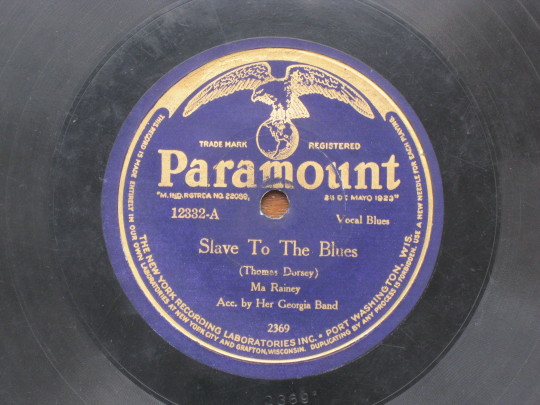
Song: Slave to the Blues / Oh My Babe Blues
Artist: Ma Rainey and her Georgia Band
Record Label: Paramount 12332
Recorded: ca. December 1925
Location: Project V13 teaser
A rare song from a rare label. Here’s “Slave to the Blues” presented by the infamous Paramount Records label. Regrettably due to both its age and the somewhat non-standard practices of recording and pressing at the label, the audio quality leaves something to be desired, but I have tried to clear up some of the noise.
This year is rather auspicious as it is the 10 year anniversary of the 2010 teaser for Project V13 on the Fallout website and also the recent release of a new film Ma Rainey’s Black Bottom on Netflix. This record happens to have been made two years before the recording session depicted in the film.
When logging into the now-defunct Fallout Online website, players were greeted with a series of Polaroid photographs being tossed onto the table offering shots of buildings and concept art while this song emanates from the glowing record player and radio combination console on the right.
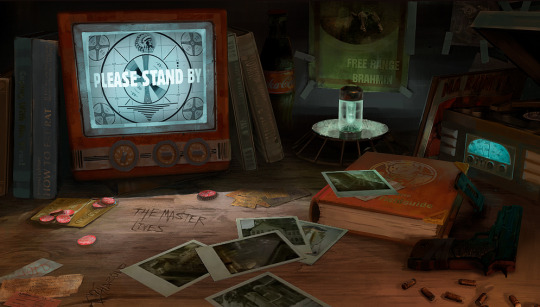
Recorded in late 1925 in the winter, this song is one of the few songs from the 1920s used in Fallout and would have been the oldest recording used in the series.

A period Chicago Defender print ad for Ma Rainey’s “Bessemer Bound Blues”, recorded during the same session. Also listed are other Paramount Record titles.
Born Gertrude Pridgett, though otherwise known as Ma Rainey, she lived a fairly colorful life rife with intrigue and rumor. Even her birthplace is uncertain with various sources giving credit to Alabama or Georgia.
As her named suggests, she is dubbed the “Mother of the Blues”, combining elements of vaudeville and early “jass” (later spelled as jazz). She and her husband William “Pa” Rainey toured extensively throughout the South in the 1900s and 1910s with live performances in minstrel shows and vaudeville. It’s around this time she coined the term “blues” to describe her music as well as developing a relationship with Bessie Smith, also up and coming.
Though demand for recordings by black musicians was high, the color barrier meant that Rainey was not able to be shellacked until 1923 by signing with Paramount.
While she recorded with many jazz stars of the day and made over one hundred recordings with Paramount, the film focuses on her last years with the label which would also go bankrupt by the 1930s.
Regrettably, there are comparatively few photos of Ma Rainey, but her voice still echoes from the grooves.

Left: A still of the 1984 Broadway cast, Center: A Playbill for “Ma Rainey’s Black Bottom”, Right: A reverse shot of the same scene from inside the recording room from the 2020 film
Strictly speaking, Ma Rainey’s Black Bottom is not an biographical film, but rather a restaging of the 1984 August Wilson play of the same name which dramatizes a 1927 recording session in Chicago. Many of the scenes take place outside of the recording room and focuses on conversations between the band members. With the exception of Ma Rainey herself, while the roles of the musicians, the recording engineer and so on undoubtedly existed, the characters are largely fictional.
The title refers to a song and dance of the same name, and of course Ma Rainey’s version of it as yet to be recorded until near the end of the story. The above record label represents the central MacGuffin which is never directly seen in the film, but drives the plot forward. While much has been said about the characters portrayed in the film including the last film role of Chadwick Boseman, here’s a closer look at one of the more muted mechanical stars of the 1920s recording process documented in the film.

Triptych of a heat wave: an electric fan, an ice-cold 5¢ bottle of Coca-Cola, and a box of discarded lacquer discs.
A slight change to the script of the play is the changing of the setting from winter to summer as foreheads glisten with perspiration. While dialing up the oppressive heat brings more prominence to the electric fan and Coca-Cola scenes (the character Levee also attempts to repeatedly open a door for ventilation), the original recording session for “Ma Rainey’s Black Bottom” was in the winter of 1927. Perhaps the winter release of the Netflix film was meant to be a reminder.
This also has an impact on the recording session itself. The film depicts the recording session using smooth black lacquer discs (sometimes called acetate discs though they do not contain that material). As the recording engineer tosses the bad takes into the bin, it shows they are thin metal discs covered with a thin layer of nitrocellulose lacquer.
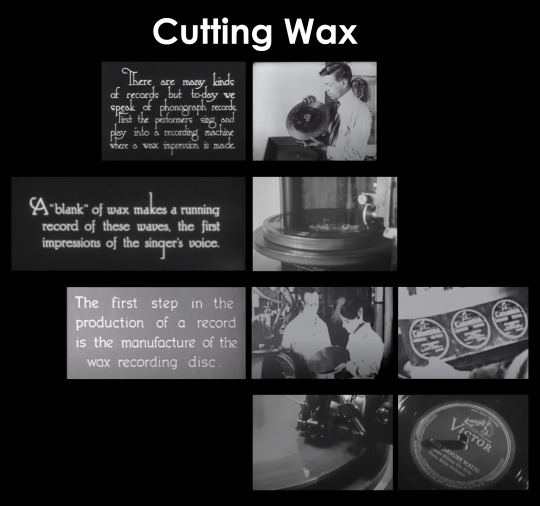
Industry films showing wax blanks used to make the initial recording before heading to the plating process. Note how the wax is polished to a shine, the disc is thicker, and of a lighter color than lacquer. The text intertitles indicate silent film footage. The first three rows date to the 1920s with the third for a Columbia Records pressing plant. The last row is a film from the 1940s showing RCA Victor still using wax recording blanks. All are for shellac 78 rpm records as the vinyl LP would be introduced in 1948.

Industry films showing lacquer covered blanks used to make the initial recording before heading to the plating process. Note how the blanks are glossy black and much thinner. The first row is from the late 1930s showing lacquer discs being used to eventually cut shellac 78s for Variety Records. 1948 would bring the invention of the vinyl LP and more common color footage. The second row shows updated footage from RCA Victor in the 1950s now using lacquer discs to press newly invented vinyl LPs. The last row also shows lacquer blanks for Capitol Records. If you don’t recognize Mel Blanc’s face, you may recognize his voice from innumerable Looney Tunes cartoons.
Contemporary film footage from record pressing plants during the 1920s more commonly show thicker one-inch discs made of wax being used in the record lathe. Lacquer discs were more commonly used in the decades following.
A wax disc would have melted in the sultry summer of Chicago which gets as hot as it does cold in the winter. While it was easy to keep a wax disc warm, cooling technology had not progressed so far during that period. Many of Ma Rainey’s recording sessions appear to have been made in the winter or at least the cooler months in Chicago and New York. A humorous anecdote about a 1930s Bob Wills recording session details packing the wax master recordings on couple hundred pounds of ice to beat the Texas heat.
Though phonograph cylinders were made of wax a few decades prior, these wax discs made during the recording process was the origin of the term “spinning wax” popularized by disc-jockeys.
Regardless of wax or lacquer, this recording is extremely fragile and unable to be played very much. Similar to today, the process still continues to metal plating where multiple more durable metal copies are mirrored before eventually stamping out the right side up grooves into a vinyl slab, or more appropriate for the era depicted in this film, a shellac record.
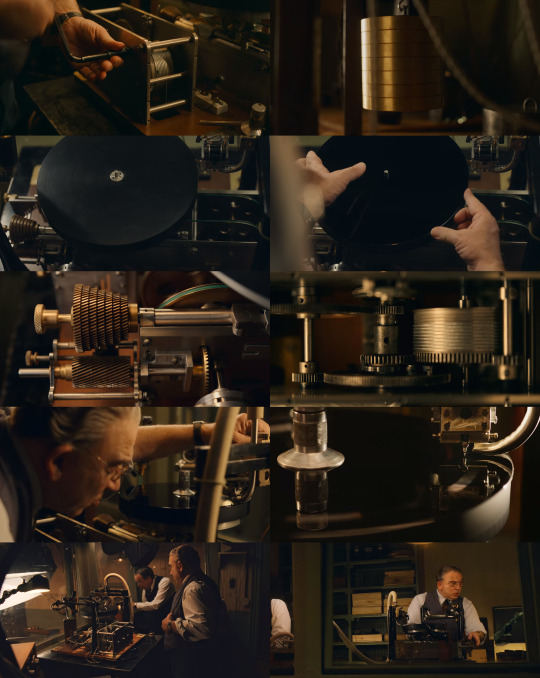
Production designer Mark Ricker called the record lathe the “fifth star of the movie”. There are scant details about where they obtained the record lathe except it was from a recreator in the Los Angeles area. It is possibly related to the work of Nicholas Bergh who had restored a working 1920s record lathe which was featured in the documentary film series American Epic. The series explores this period of early recorded music and the people in front of and behind the microphone including Ma Rainey. In addition, contemporary artists attempt to adapt their music to the rigors, quirks, and restrictions of a 1920s recording studio. Jack White also produced on the film as well as producing the extensive Rise and Fall of Paramount Records box sets. Admittedly, the two machines aren’t a perfect match, but there is a very similar brass weight driving the entire mechanism which spectacularly snaps and crashes to the floor in a recording session.
With lacquer discs being used to preserve radio broadcasts by the late 1930s, it is likely the record lathe was adapted to work with lacquer discs since they are still in use today and more common to come by than wax discs.
Also notable during the session is that all the instruments and the vocalist share one microphone. The request for a second microphone was likely for dramatic effect. Similar to the acoustic era, the early electric microphone era were still experimenting with proper placement. It is a testament to the power of Ma Rainey’s voice that it can be picked out amongst the surface noise as the instruments and vocals move in and out of focus.
These were the days before the invention of magnetic tape and a substantially reduced recording booth without hulking amplifiers, control boards, and tape machines reflects that. Multi-track recording, overdubbing, or even audio editing was very difficult to accomplish in the pre-tape era. One microphone, one take, and direct to disc, otherwise the recording had to be done over.
While wax could be remelted or perhaps shaved, a flubbed take on a lacquer disc could not. Despite what some of the characters say, 6, 7, 8, 9 takes for the first song of a set-list would be expensive. Paramount would go bankrupt in the following years.


Paramount Records had a storied history nearly rivaling Ma Rainey herself though the record itself largely serves as the MacGuffin in the story. While the name of the record label was never directly mentioned in the film, there are some loose references. The advertising placards around the door mention offerings from a chair factory which Paramount originated. The Wisconsin Chair Company added making phonograph cabinets to its list of operations before delving into making their own phonographs and a record label in 1918.
Like Ma Rainey’s manager, the roles of the recording engineer and the record producer were likely combined into one character, Sturdyvant of Hot Rhythm Recordings, as the sign outside says.
Due to the popularity of the “race records”, Paramount had actually rented or owned recording studios in New York, Chicago, and in Wisconsin. Jay Mayo Williams or “Ink” Williams served as an unofficial liaison between Paramount and the African-American community, even convincing Ma Rainey to record for the label.
However, the label was plagued by low-quality pressings and inconsistent recording practices. Some records even have other songs heard in neighboring rooms. Williams would leave to produce his own record label Black Patti and later was head of the race records department at Decca.
The coming of the 1930s and the Great Depression spelled the end for Paramount Records. Employees were let go or reportedly paid in the metal record masters. Though many were sold for scrap metal, local rumor has the disgruntled employees throwing the masters into the Milwaukee River.
As a result, much of the Paramount Records catalog has become exceedingly rare or outright lost to the ages.

As a coda, a final scene was added to the film which was not present in the original play. A white orchestra plays a restrained version of a composition heard earlier by the Levee character. The bandleader is not named, but strongly resembles Paul Whiteman, one of the most recorded of the dance bands of the day. His trademark mustache and oval head were frequently caricatured even on his own record labels. Though he never recorded for Paramount, he was at the Victor and Columbia labels at the time, in addition to the circumstances of the recording session in the film there is an added layer referring to the background of his controversial self-styled moniker “The King of Jazz”.
Listen to the flip side “Oh My Babe Blues” here.
#Slave to the Blues#Ma Rainey#Paramount Records#Project V13#Fallout Online#Ma Rainey's Black Bottom#78rpm#_rpm78
46 notes
·
View notes